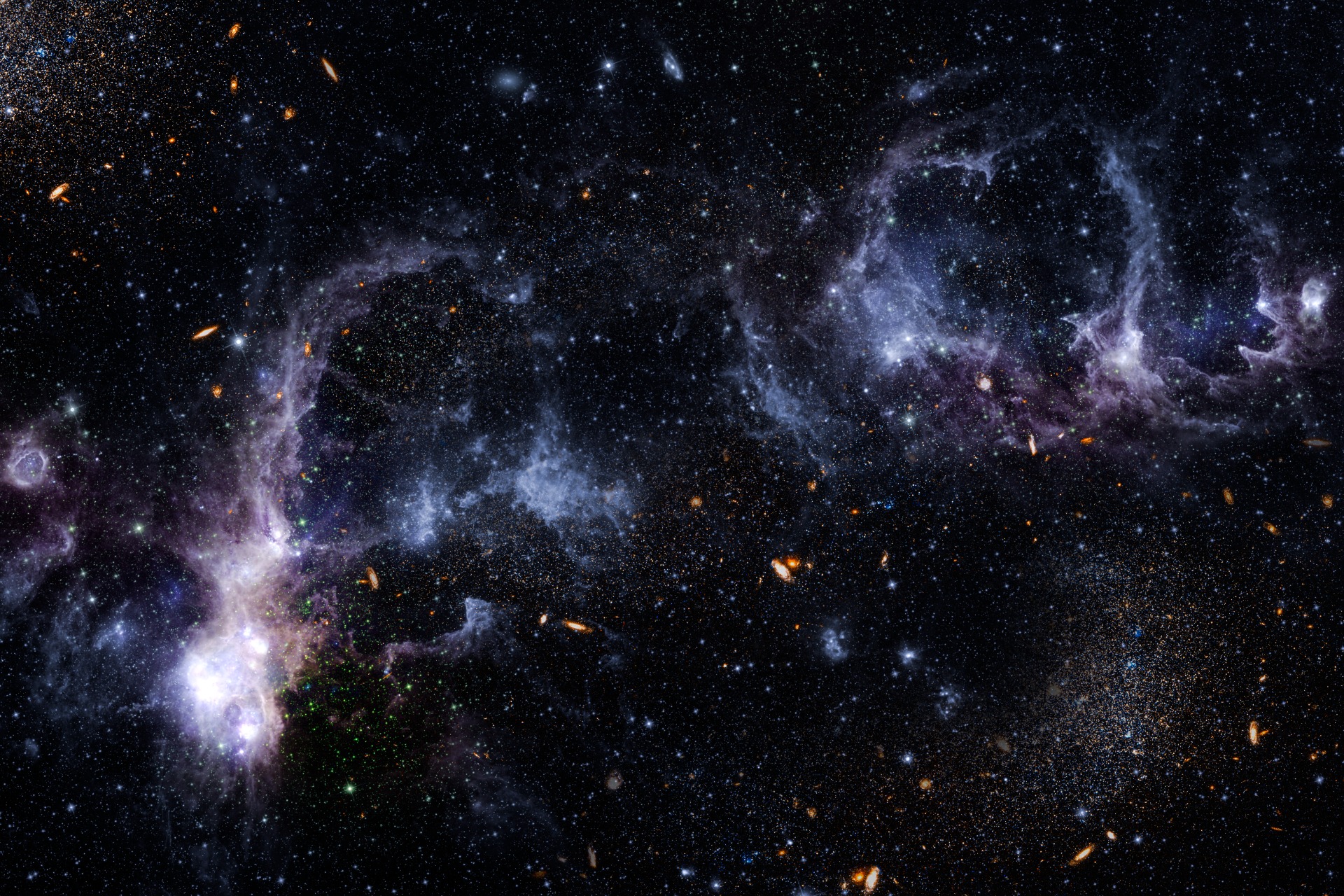
ASTRO SPACE NEWS
A DIVISION OF MID NORTH COAST ASTRONOMY (NSW)
(ASTRO) DAVE RENEKE
SPACE WRITER - MEDIA PERSONALITY - SCIENCE CORRESPONDENT ABC/COMMERCIAL RADIO - LECTURER - ASTRONOMY OUTREACH PROGRAMS - ASTRONOMY TOUR GUIDE - TELESCOPE SALES/SERVICE/LESSONS - MID NORTH COAST ASTRONOMY GROUP (Est. 2002) Enquiries: (02) 6585 2260 Mobile: 0400 636 363 Email: davereneke@gmail.com

Why a Seestar Telescope Belongs Under Every Christmas Tree
Every now and then, a piece of technology comes along that doesn't just improve what we do—it reshapes the entire experience. For us, that moment arrived when ZWO generously donated a Seestar telescope. Since then, our public night-viewing sessions have been transformed. This compact, self-contained smart telescope has become the centrepiece of every stargazing event we run, drawing crowds, sparking curiosity, and giving first-timers the thrill of capturing real astronomical images in minutes.
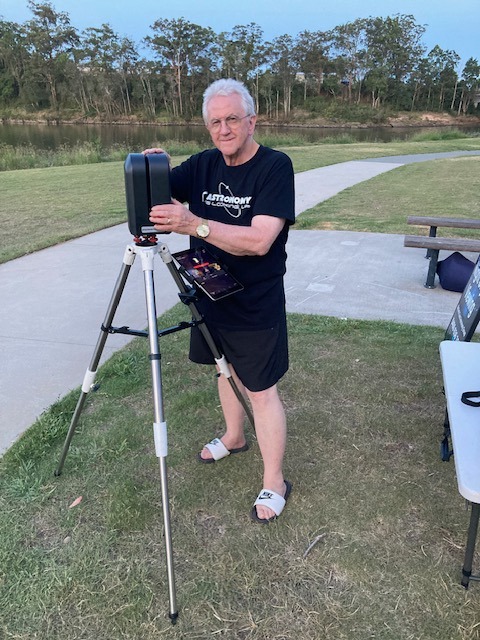
The Seestar range—especially the S50 and its smaller sibling, the S30—has done something rare in amateur astronomy. It has removed almost every barrier that traditionally stops newcomers from getting involved. No fiddly collimation. No heavy mounts. No weeks spent learning cables, cameras, and calibration frames. Instead, you open the case, place it on its tripod, tap a few icons on your phone, and within moments you're watching deep-sky objects reveal themselves in crisp, colourful detail. For pure ease of use, nothing else in its class comes close!
What has surprised us most is how quickly people of all ages take to it. Kids, retirees, curious first-timers—everyone wants a turn. The software guides you, the focusing is automatic, and the telescope aligns itself without any drama. The result: sharp, professional-looking images of galaxies, nebulae, clusters, and the Moon, captured with minimal effort and at a cost that's genuinely accessible compared to traditional astrophotography setups.
It has changed the way we run astronomy events. Instead of struggling with big gear or racing to troubleshoot something in the dark, we're free to share the stories behind the stars. The audience gets a front-row seat to the universe without the wait, and we get to spend more time connecting people with the night sky.
On a personal note, the Seestar has reignited my own passion for capturing the heavens. More than once I've found myself outside at 2 a.m., watching the latest image build on the screen, amazed at what this little unit can pull out of the darkness. I've even taken it overseas to Norfolk Island on our annual Astro Tours, where it performed flawlessly—light, portable, and rugged enough to handle the travel.
That combination of performance, portability, and price is why I recommend the Seestar S50—or the S30 for those who prefer an even more compact option—as the perfect Christmas gift. It suits beginners, it impresses seasoned observers, and it delivers high-quality results without the steep learning curve normally associated with astrophotography.
If you've ever dreamed of capturing your own images of the universe, or want to give someone a gift that inspires excitement long after the holidays, this is the one. The Seestar has earned its place as one of the most exciting, accessible instruments ever made for amateur astronomers
Near-Miss in Orbit — Chinese Spacecraft and Starlink
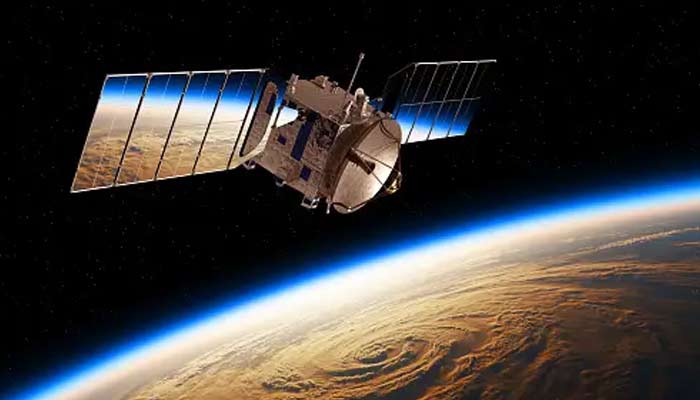
- A spacecraft launched on December 9 aboard a Chinese rocket came dangerously close to a Starlink satellite.
- SpaceX says the object passed close enough to raise serious collision concerns.
- The near-miss highlights growing congestion in low Earth orbit as satellite numbers surge.
- No collision occurred, but the incident underscores rising risks from limited transparency and coordination in space traffic management.
- SpaceX has repeatedly warned that untracked or poorly monitored spacecraft increase the chance of catastrophic orbital debris events.
Scientists Spot the Largest Known Rotating Structure in the Universe
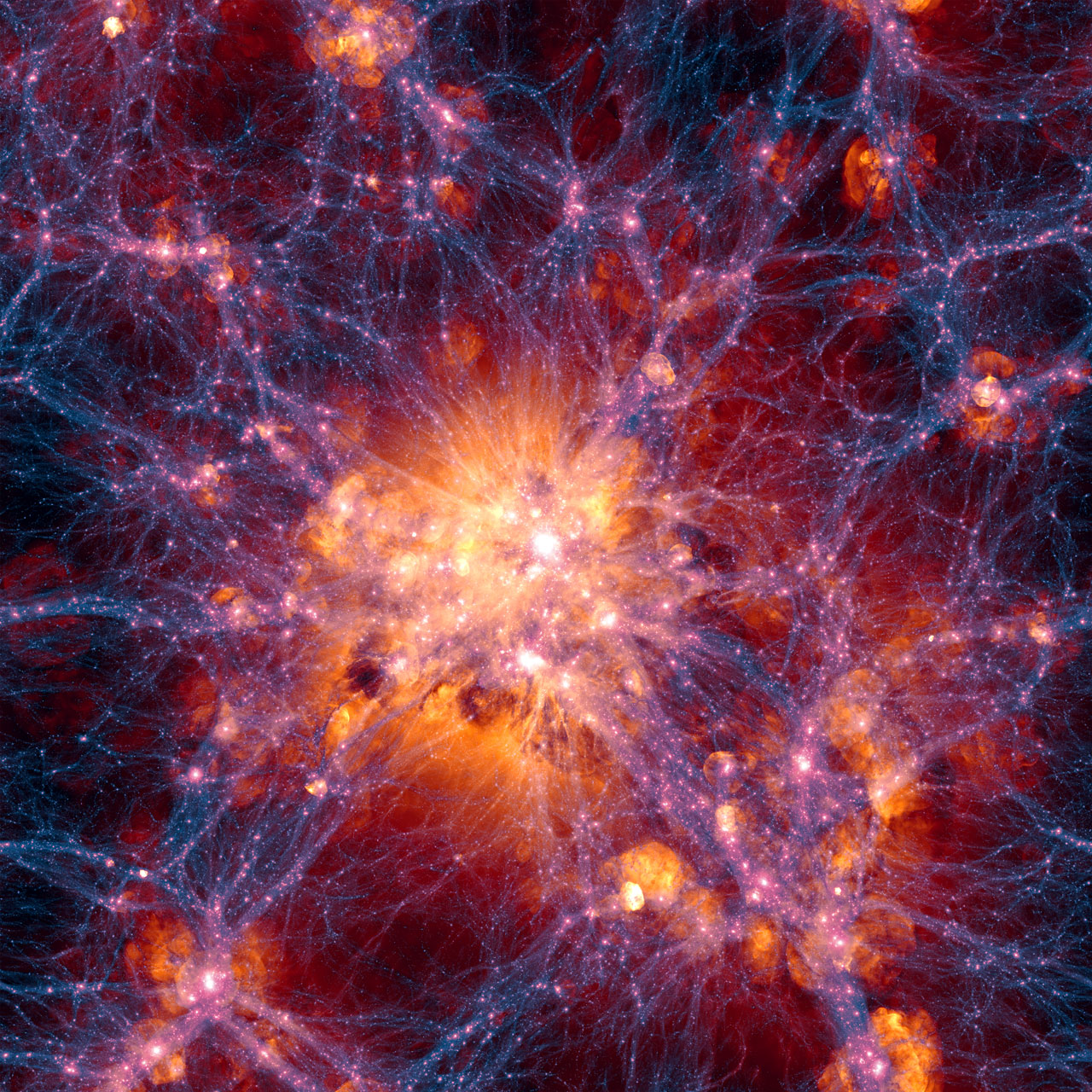
- An international research team has detected what may be the largest rotating structure ever observed in space.
- The structure spans billions of light-years and is made up of dark matter and gas-rich galaxies.
- Researchers found that entire galaxy filaments appear to rotate together, not randomly as once assumed.
- This challenges long-held ideas about how large-scale structures form and evolve in the universe.
- The discovery, reported by Futurism, could reshape models of cosmic motion and dark matter behaviour.
How Long Will The Footprints On The Moon Last?

In July 1969, when Buzz Aldrin pressed his boot into the Moon's dusty surface, he didn't just leave a footprint. He left a quiet rebuttal to every doubter who would ever claim it didn't happen.
More than half a century later, that footprint is still there. Not a softened outline. Not a blurred memory. The same crisp impression Aldrin photographed beside the Apollo 11 Lunar Module. On Earth, a footprint lasts minutes before wind, rain, or the next passer-by wipes it away. On the Moon, time plays by very different rules.
The Moon has no atmosphere. That means no wind to scatter dust, no rain to wash it smooth, no rivers, no waves, and no weather of any kind. It is a world locked in near-permanent stillness. Once something disturbs the surface, it tends to stay disturbed. Geological activity is minimal. There are moonquakes, but they are weak and infrequent. Erosion, as we understand it on Earth, simply doesn't exist.
So how long will those footprints last? The honest answer is astonishing: potentially millions of years. The only real threat comes from micrometeorites — tiny grains of space debris that pepper the lunar surface at high speed. Over immense spans of time, these microscopic impacts will gradually soften edges and blur shapes. But "gradually" is the key word. At the current rate, the Apollo footprints could remain recognisable longer than human civilisation has existed so far.
The rippled shapes seen around those footprints tell an interesting story of their own. Lunar soil, called regolith, is nothing like Earth dirt. It's made of crushed rock and glassy fragments created by billions of years of impacts. There's no moisture to bind it together, yet the grains are sharp and angular, so they interlock when pressed. When an astronaut stepped down, the weight compressed the soil unevenly, forcing it outward in tiny ridges and waves. Those ripples aren't decorative — they're a physical record of pressure, motion, and human presence in a place that had never known either.
Sceptics sometimes scoff, asking why the flag doesn't wave or why the footprints look "too perfect." The irony is delicious. The very things they point to as suspicious are exactly what physics predicts in an airless world. No wind means no waving. No erosion means perfect preservation. The Moon isn't hiding the evidence — it's protecting it.
There's something deeply human about those marks. Astronauts later admitted they sometimes walked backward just to avoid stepping on earlier footprints, aware they were altering a surface untouched for billions of years. On Apollo 17, Gene Cernan even traced his daughter's initials into the dust, knowing they might outlast every monument on Earth.
Since 1972, no human has returned. The footprints remain undisturbed, sitting in total silence under a black sky. One day, new explorers will stand beside them again. When they do, they won't just be looking at old boot prints. They'll be standing face to face with proof of a triumph — a moment when a small, fragile species reached across space and left a mark that time itself has chosen not to erase.
In this day and age, it's staggering some still claim the Moon landing was faked. We have laser reflectors, tracked missions, and crystal-clear images from NASA's Lunar Reconnaissance Orbiter. Anyone can visit the LRO website and see the Apollo landing sites—footprints, tracks, and all.
Black Hole Blasting Matter into Space at 224 Million Km/h
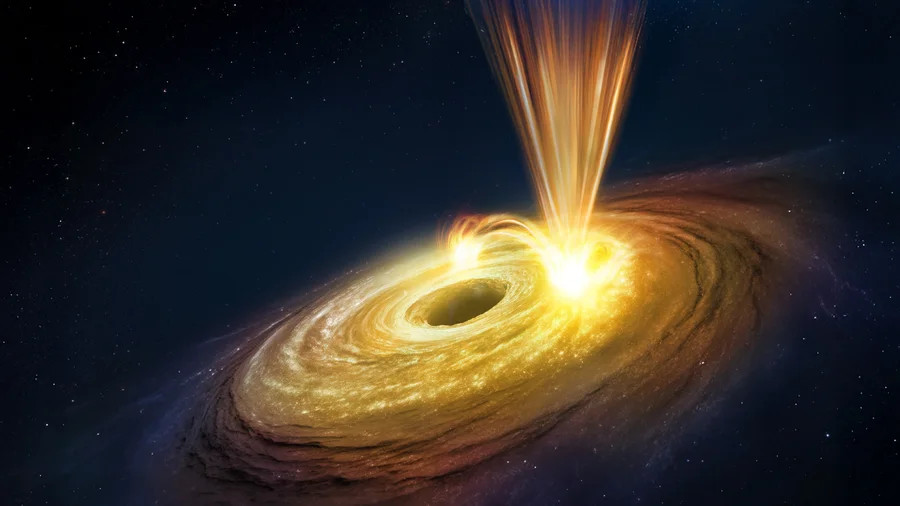
X-ray space telescopes caught a supermassive black hole flinging matter into space at a fifth of the speed of light. Supermassive black holes are the monsters of the universe, so it is perhaps only fitting that astronomers discovered one of these behemoths unleashing a bright x-ray flare that one of the researchers, astronomer Matteo Guainazzi, described as "almost too big to imagine" in a European Space Agency (ESA) press release.
Within hours of erupting, the blast faded, and the black hole began to whip up winds more powerful than anything we can imagine on Earth and flinging material into space at about 130 million miles per hour—a fifth of the speed of light. For comparison, plasma ejected during a coronal mass ejection from the sun typically travels at a mere three million mph.
To study the black hole, astronomers used two x-ray space telescopes: the ESA's XMM-Newton and the X-Ray Imaging and Spectroscopy Mission, which is a collaboration between the ESA, NASA and the Japan Aerospace Exploration Agency. Lurking at the center of the spiral galaxy NGC 3783, the supermassive black hole—with a mass of 30 million suns—powers the galaxy's heart, a region known as an active galactic nucleus.
According to Guainazzi's statement, tangled magnetic fields in this region may have suddenly "untwisted," generating the winds. Knowing more about active galactic nuclei, and the way that they generate such powerful jets and winds, is key to understanding how galaxies form and evolve over time, study co-author and ESA researcher fellow Camille Diez said in the press release.
The Biggest Star in the Universe 10 Billion Times Bigger Than Our Sun
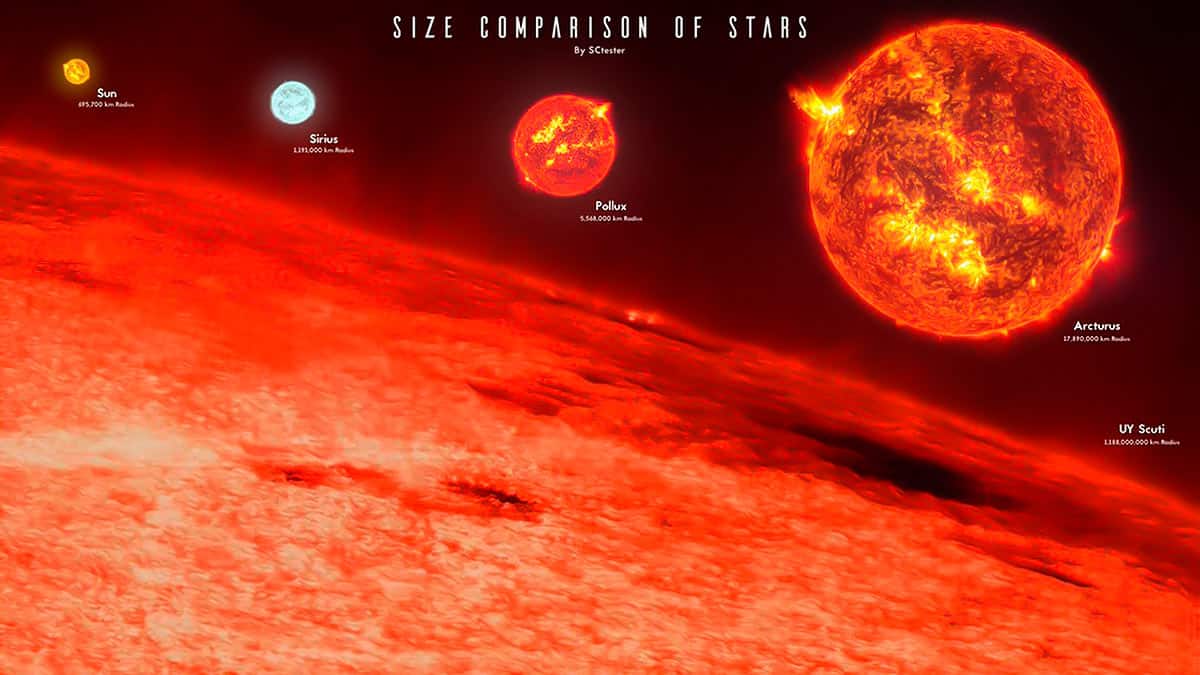
Some stars shine quietly for billions of years and fade away without much fuss. Stephenson 2-18 is not one of them. This is a star that seems almost too big to exist — a cosmic rule-breaker that stretches our understanding of how the universe works.
Stephenson 2-18 is a red supergiant, one of the largest types of stars ever discovered. To call it "large" is wildly inadequate. If this monster replaced our Sun, it would balloon outward so far that it would swallow Mercury, Venus, Earth, Mars, Jupiter, and even Saturn. The space where our entire solar system now peacefully orbits would instead be a churning ocean of glowing gas.
The scale is staggering. Light, the fastest thing in the universe, would take more than eight hours just to cross from one side of Stephenson 2-18 to the other. For comparison, light crosses our Sun in seconds and reaches Earth in eight minutes. Suddenly, the Sun — the engine of all life on Earth — looks almost embarrassingly small. Next to Stephenson 2-18, it would resemble a grain of dust floating beside a blazing bonfire.
But size alone doesn't tell the whole story. Stephenson 2-18 is unstable, restless, and living on borrowed time. Red supergiants are stars in their final chapter, bloated and exhausted after burning through their nuclear fuel at a furious pace. Stephenson 2-18 is shedding enormous amounts of material into space, blowing off stellar winds so vast they could one day seed future star systems.
Some astronomers think it may already be wobbling on the edge of collapse. Inside its core, nuclear reactions are stacking heavier and heavier elements, like a cosmic game of Jenga. Eventually, the structure can no longer support itself. When that happens, the result could be one of the most violent events in the universe.
One possibility is a supernova — an explosion so powerful it briefly outshines entire galaxies. In that single moment, Stephenson 2-18 could release more energy than our Sun will produce over its entire lifetime. For weeks or months, it would blaze across the Milky Way, visible across vast interstellar distances.
The other possibility is even stranger. The star may collapse directly into a black hole, with little warning and no dramatic explosion — simply vanishing, leaving behind a region of space where gravity reigns supreme and light itself cannot escape. A giant disappearing without a bang, as if the universe quietly erased one of its largest creations.
What makes Stephenson 2-18 even more fascinating is how rare such stars are. Objects this large live fast and die young. While stars like our Sun enjoy lifespans of around ten billion years, Stephenson 2-18 may burn out in just a few million. In cosmic terms, it is a mayfly — massive, brilliant, and fleeting.
Located about 19,000 light-years away, this stellar titan is safely distant from Earth. Its eventual death won't threaten our planet, but it does offer astronomers a priceless glimpse into the extremes of nature. Stars like this forge the heavy elements that eventually become planets, oceans, and even life itself. Iron in your blood and calcium in your bones were born in ancient stellar deaths not unlike the one Stephenson 2-18 is heading toward.
In the end, Stephenson 2-18 is more than just a giant star. It is a reminder that the universe doesn't just build things on a human scale — it builds them with outrageous ambition. It shows us that reality can be far stranger, bigger, and more dramatic than imagination ever dared to be.
Somewhere out there, a colossal star is burning furiously, shedding its outer layers, and edging closer to a spectacular finale. And when that final moment comes, the universe will once again remind us just how small we really are — and how astonishing the cosmos can be.
Artemis, We Have a Problem - NASA's Moon Return In Trouble?
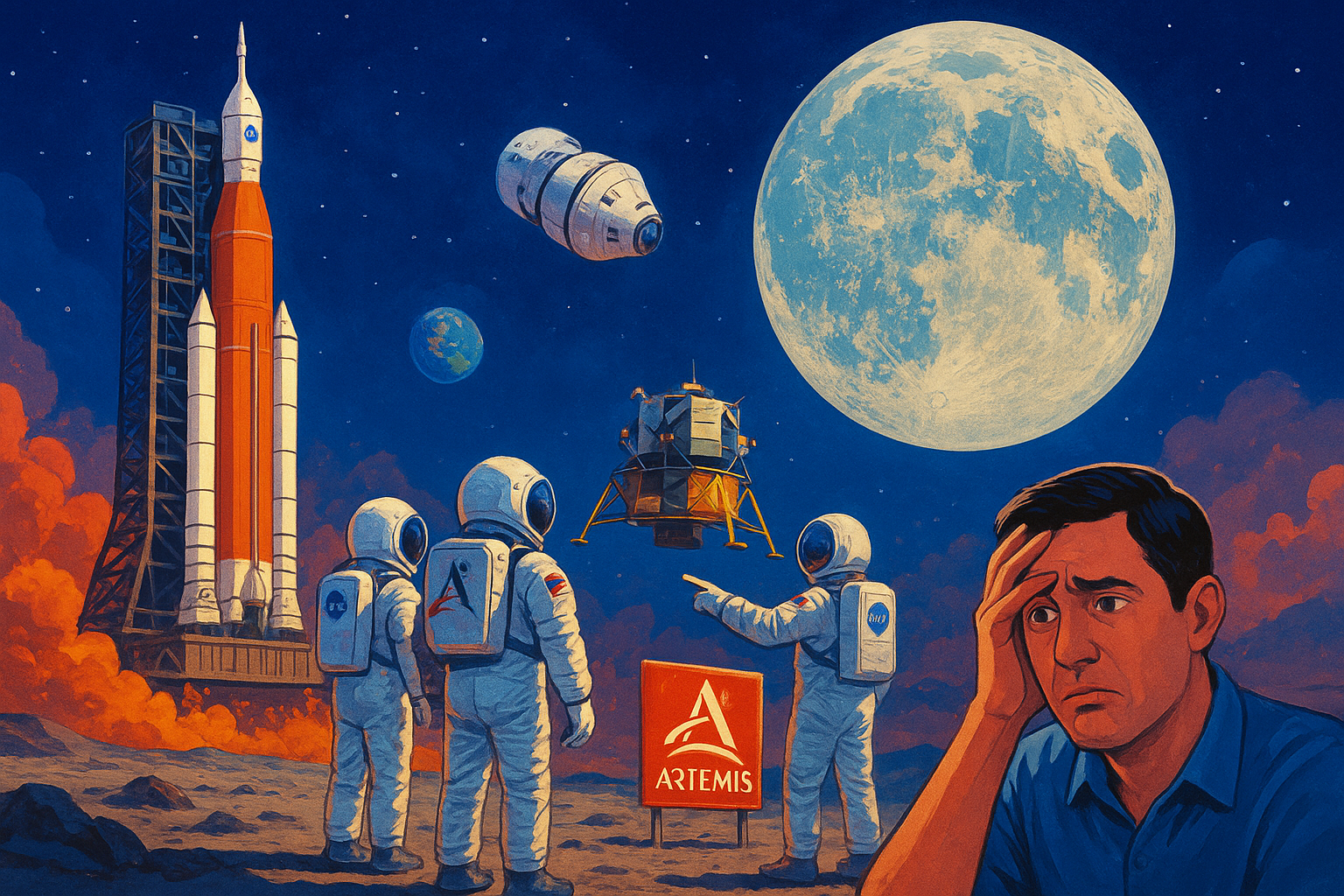
For all the fanfare that should accompany humanity's return to the Moon, the Artemis program faces an unexpected adversary: near-total public obliviousness. Bring up NASA's plan to send astronauts around the Moon in 2026 and land in 2027, and many people respond with genuine confusion. "Didn't we already do that?" is now the standard refrain. Even the scientifically literate are foggy. A recent chat with six highly informed neighbours—including two former National Science Foundation veterans—revealed that none of them could explain Artemis. The only detail they confidently volunteered was wrong: that it's a mission to Mars.
It isn't. In fact, nothing in NASA's current arsenal resembles a Mars program. There's no long-distance rocket, no deep-space crew capsule, no mission profile, and no operational timeline. Mars remains an aspiration, not a plan.
Artemis, by contrast, is a plan—albeit a deeply troubled one. Its architecture relies on a chain of components that must work perfectly: the Space Launch System, the Orion spacecraft, the lunar lander, and a whole ecosystem of new support systems. Each of these carries its own delays, overruns, and technical disputes. Engineers have raised fundamental concerns about the program's logic, prompting calls to rethink or streamline the entire approach.
What makes this moment particularly precarious is that NASA's internal climate is unusually unsettled. The agency is navigating leadership change, workforce pressure, shifting congressional expectations, cost blowouts, and the persistent tug-of-war between traditional contractors and newer commercial players. Reconfiguring a major mission during a calm year is hard enough; doing so amid institutional turbulence multiplies the risk.
Still, it isn't all grim. NASA's willingness to publicly admit the program's structural issues is, in itself, a positive sign. It suggests the agency is preparing to adjust course before the problems become mission-killers. Political backing for a lunar return remains relatively strong, and international partners are still engaged. Scientific motivations—testing life-support systems, developing long-duration habitats, and scouting resources like water ice—continue to justify the effort.
So Artemis stands in a tense, contradictory space: bold in vision, shaky in execution, under-loved by the public, yet still vital to the future of human exploration. If NASA can stabilise its internal machinery and refine the program's architecture, the Moon may once again host human footprints. But right now, the path from ambition to reality is anything but smooth.
Look Up, Australia! A Meteor Shower Is Peaking Soon
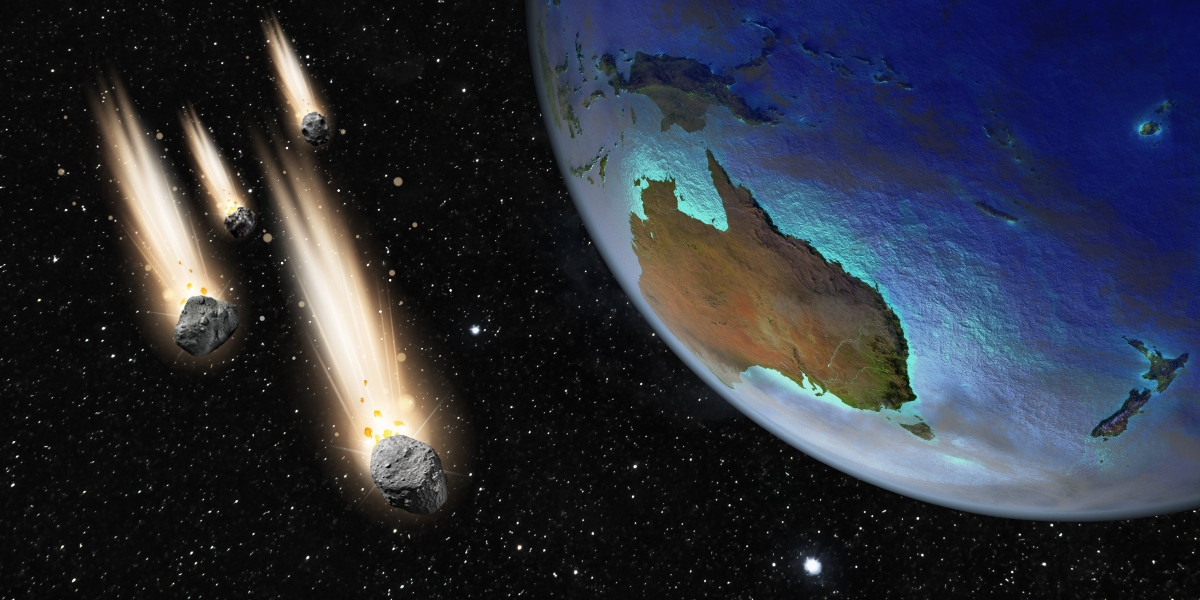
Get ready, sky gazers!One of the year's best meteor showers is about to peak.The Geminid meteor shower peaks the night of December 13–14 – and it's not just any meteor shower. It's one of the best of the year, known for producing over 100 bright meteors per hour, with fireballs, long trails, and a consistent, vivid display.Unlike most showers, which come from icy comets, the Geminids come from a strange rocky object: aste roid 3200 Phaethon.
It behaves like a comet, but it's an asteroid – one that sheds debris as it passes close to the Sun. When Earth crosses its path each December, that dust hits our atmosphere at 78,000 miles per hour (125,000 km/h), creating brilliant streaks of light across the sky.Even better? The Moon won't interfere this year.
A waning crescent rises late, leaving dark skies for optimal viewing. Just find a spot far from city lights, lie back, and let your eyes adjust for 30 minutes. While the meteors appear to radiate from the constellation Gemini, they'll streak across the whole sky.The Geminids were first recorded in 1833, seen from a riverboat on the Mississippi River.
And they've only grown stronger. Over the centuries, Jupiter's gravity has pulled the debris stream closer to Earth, intensifying the annual show.So mark your calendar, bundle up, and look up.
What Is The Difference Between Asteroids, Comets & Meteors?
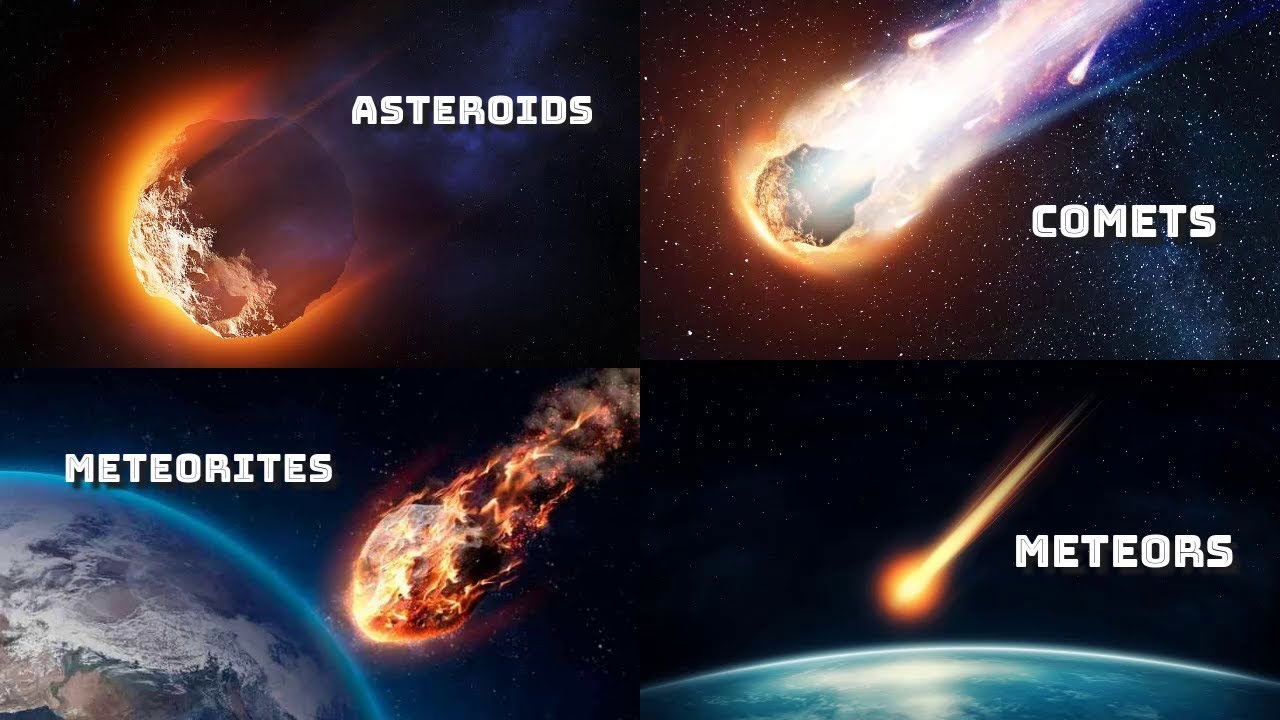
NASA successfully changed an asteroid's path in 2022, showing we can redirect potentially hazardous space rocks.
Shooting stars, meteor showers, and glowing comets are some of the most fascinating sights in the sky, but without an astrophysics degree, it can be tricky to tell them apart. Frankly, just knowing which is which isn't enough—you might also wonder which of them could pose a threat to life on Earth. Not to worry, the answers are on the way. Here's a quick crash course on asteroids, comets, and meteors.
Space rocks are solid objects that drift through space. While they're usually composed of rock and minerals, they may also contain metals or ice. Examples include asteroids, meteoroids, and comets. Studying them is important because some eventually land on Earth, allowing scientists to learn more about the history of our planet, the workings of our solar system, and the broader Milky Way.
Asteroids are rocky leftovers from the formation of the Solar System. They range from car-sized to town-sized but are always smaller than planets, lacking enough gravity to hold an atmosphere. Most orbit in the Asteroid Belt between Mars and Jupiter, where millions of them occasionally collide, fracture, or shift course. Comets are also remnants from planet formation, but they're made of ice, dust, and rock—leading to their reputation as "dirty snowballs." They follow long, looping orbits around the Sun that can take hundreds of thousands of years to complete. As they near the Sun, heat causes them to release gas and dust, creating the spectacular glowing tails we see from Earth. Although scientists suspect billions exist, only about 4,000 have been identified.
When asteroids, comets, moons, or planets collide, smaller fragments break off—these are meteoroids. When a meteoroid enters Earth's atmosphere and burns up, the streak of light it produces is called a meteor, or shooting star. Larger incoming pieces are known as fireballs or bolides. If any part survives the descent and reaches the ground, it becomes a meteorite.
Asteroid impacts aren't just the stuff of disaster films—they have happened before. The mass extinction 66 million years ago, which wiped out the dinosaurs, is believed to have been caused by an asteroid. But not all impacts are catastrophic. Small asteroids and meteoroids enter Earth's atmosphere constantly and burn up harmlessly. Larger ones can create impact craters such as Meteor Crater in Arizona or Lonar Crater in India. An asteroid the size of a house could destroy a town with force comparable to an atomic explosion. Even larger impacts could throw enough dust into the atmosphere to block sunlight, triggering global cooling.
Comets, because of their icy composition, tend to break apart more easily during atmospheric entry, but a sufficiently large one would be just as devastating. Besides generating massive dust clouds, a major comet impact could disrupt the Earth's crust and oceans, sparking firestorms and huge tsunamis.
Although unlikely, the possibility of a significant impact is serious enough that scientists are actively working on prevention. In 2022, NASA's Double Asteroid Redirection Test (DART) succeeded in altering an asteroid's motion by deliberately crashing a spacecraft into it. This proved that, given enough warning, an incoming asteroid could potentially be nudged off a collision course. Early detection is crucial, which is why NASA and other agencies continue scanning the skies for hazardous objects.
Asteroids, comets, and meteoroids are all forms of space rock, differing in their composition, origins, and behavior. Asteroids are rocky bodies orbiting the Sun, comets are icy objects with glowing tails, and meteoroids are small fragments from other bodies. When a meteoroid burns through our atmosphere, we see it as a meteor.
While an impact is unlikely, it's not impossible. Fortunately, scientists are monitoring the heavens closely and developing ways to prevent disaster. In the meantime, you can relax—and enjoy nature's celestial light show.
Buying a Star: The Gift That's Out of This World… Sort Of

Every Christmas, birthday and anniversary brings the same question: What on Earth do you buy someone who already has everything? Well, you don't buy them something on Earth at all. You buy them a star. Yes, one of those glittering little dots that's been hanging around for a few billion years, minding its own business — until you decide to slap Aunt Mavis's name on it.
Star-naming companies have turned the night sky into the ultimate novelty gift shop, and Australians have embraced it with gusto. Several local outlets offer packages that promise to immortalise your loved one in the heavens. Prices vary, but most sit somewhere between AUD $40 and $120, depending on how fancy you want the paperwork to be. One popular service sells "Silvernova" stars for about $44.90, constellation-themed "Supernova" stars for around $69.90, and a romantic double-star package for $119.90. Another well-known provider charges around $99 for a glossy gift pack complete with parchment certificate and star chart. Even Australian Geographic joins the fun with a star-naming gift box for about $39.95.
So what do you actually get for your money? Mostly, a very nicely presented certificate, a chart showing where your star sits, a letter of dedication, and sometimes a gift box, booklet, or even an app to help you "find" your new celestial treasure. For most people, that's more than enough. It's charming, sentimental, and looks great framed on a wall.
Now — here comes the serious bit. Regardless of how official the parchment looks, the only body with the power to officially name stars is the International Astronomical Union (IAU). They don't sell names. They don't take requests. And they certainly don't send certificates tied with gold ribbon. So, while your star-naming package is perfectly legal, it has no scientific standing. The name you choose won't appear in astronomical catalogues, it won't be used by professionals, and you won't own a cosmic chunk of real estate.
But does that ruin the fun? Not at all. Think of it this way: the real value isn't in the "ownership" — it's in the gesture. You're giving someone a symbolic slice of the night sky, wrapped in meaning. The star becomes a reminder of love, loss, celebration, or a moment worth remembering. For many, the sentiment is far more important than the science. As novelty gifts go, star-naming is one of the more thoughtful ones.
These services are undeniably popular. People love the romance of it all — the idea of pointing out a spot in the sky and saying, "That one's yours." And even though you might not be able to trademark Alpha-Beta-Mavis-Prime, your chosen name will appear forever in the company's registry, which is more or less the celestial equivalent of carving initials into a tree.
As for locating your new star, most services include coordinates, maps or apps to help guide you. Just don't be too disappointed if the star is faint, hard to spot, or competing with the glow of your neighbour's new floodlights.
In the end, buying a star is a bit of fun wrapped in good will. It's symbolic, sentimental, and yes — delightfully corny. But sometimes that's exactly what a gift should be. After all, isn't it nice to think that somewhere in that vast glittering sky, there's a tiny point of light with someone's name attached simply because you cared enough to put it there?
Was the Christmas Star Real?

Every December, just before sunrise, a brilliant light rises in the east and catches the eye of anyone up early enough to see it. Astronomers recognise it instantly as Venus, the ever-faithful "morning star." But for many, its appearance stirs memories of a far older and far more mysterious light in the sky: the Christmas Star.
The "Star of Bethlehem" remains one of the most enduring enigmas of Christianity. Historians have spent centuries trying to decode what kind of celestial event could have inspired the account in the Gospel of Matthew. Despite all the theories, no single explanation perfectly satisfies every detail. But that uncertainty only fuels the wonder that surrounds the Nativity story. The mystery, rather than diminishing it, has kept the Christmas Star alive in the world's imagination.
In ancient Middle Eastern cultures, the sky wasn't just a backdrop—it was a divine billboard. People watched the heavens with deep reverence, convinced that celestial events revealed cosmic intent. Stars and planets weren't simply distant lights; they were symbols of guidance, prophecy, and destiny. So when an unusual event lit up the sky, it wasn't taken lightly. Was the Nativity star a supernatural sign, or could it have been a genuine astronomical event witnessed by keen-eyed observers of the time?
That question nagged at me. So, armed with modern astronomical software and a healthy dose of curiosity, I decided to investigate. Today's tools can recreate the sky exactly as it appeared thousands of years ago. If the Christmas Star was real, surely it would show up in the sky of that era. And if it did… what exactly were the Magi looking at?
To my surprise, something remarkable appeared. Using an approximate timeframe drawn from Matthew's account—the only biblical narrative where every person and event aligns geographically and chronologically—I rolled back the night sky to the years surrounding the birth of Jesus. That's when a rare sequence of astronomical events began to unfold on the screen.
Historical records confirm that between 3 BC and 2 BC a series of close planetary pairings occurred. As the simulated heavens moved forward, Venus and Jupiter—the two brightest planets—began drifting toward one another. Slowly, steadily, they closed the gap. It felt like watching a cosmic puzzle piece click into place.
Then came the moment that truly grabbed me. On 17 June, 2 BC, in the constellation Leo, Venus and Jupiter appeared to merge into one dazzling point of light. To anyone observing with the naked eye, the two planets would have looked like a single, brilliant beacon hanging above the horizon. Jupiter, long regarded as the "planet of kings," meeting Venus in the star pattern symbolising royalty? For sky-watchers of the time, particularly the learned Magi, this would have been a powerful omen—perhaps powerful enough to send them on a long journey westward.
Was this the Christmas Star? It fits the time, the symbolism, and the extraordinary nature of the event. While we may never know with absolute certainty, the astronomical evidence makes the possibility hard to ignore.
And perhaps that's the real charm of the story. The Christmas Star sits at the crossroads of science, faith, and wonder. Whether it was a rare alignment of planets or a unique divine sign, it continues to inspire awe during the holiday season.
If you'd like to see a modern stand-in for that ancient light, rise early and look east from about 3:30am. Venus will be waiting for you—brilliant as ever. Want to see the Xmas "Star" for yourself? OK, get up early, head outside and gaze to the east from 5:30am. If you've got clear skies you can't miss it! For all the latest discoveries in astronomy and space, head over to my website: www.davidreneke.com
This Space Telescope's Entire Job Is to Search For Signs of Life On 20 Distant Planets
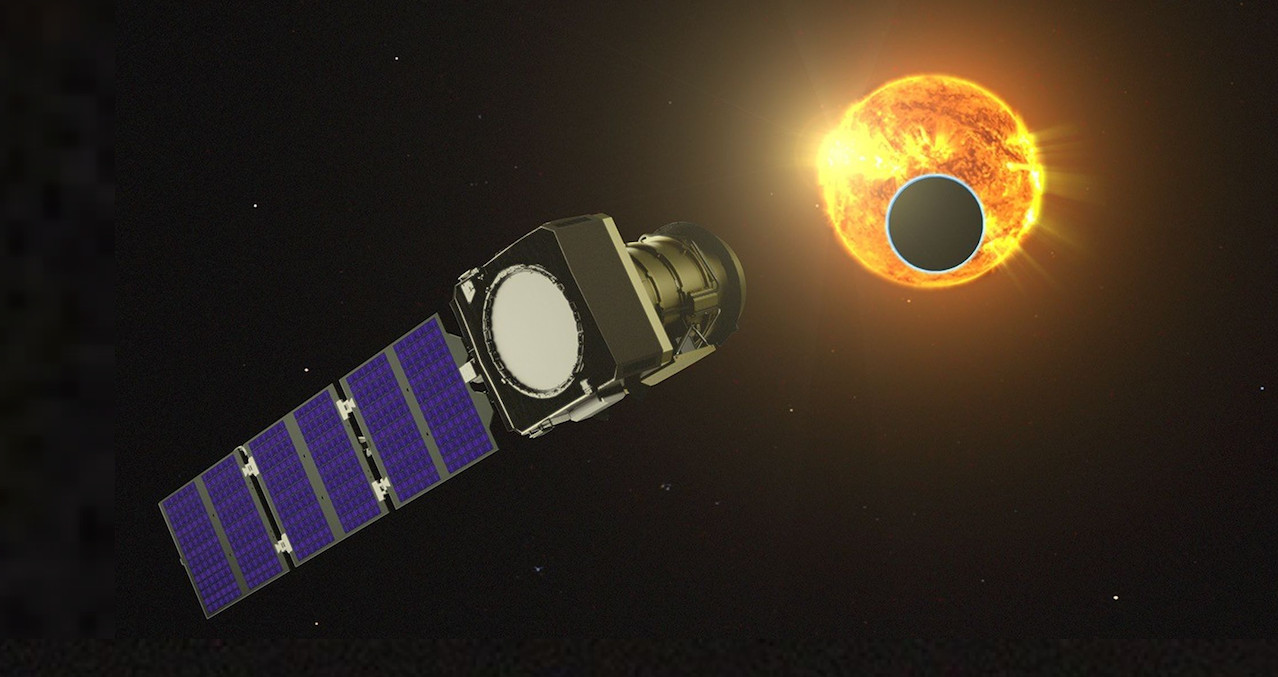
A new space telescope named Pandora is set to launch in early 2026 with a single purpose: to search for signs of life on 20 carefully chosen exoplanets. Unlike massive observatories such as the James Webb Space Telescope, Pandora is a compact 716-pound spacecraft only 17 inches across. Its strength is not size, but time. It will stare at each target star system for up to 24 hours at a time, repeating these long sessions ten times per system to build the most detailed atmospheric profiles ever attempted for these particular worlds.
Pandora hunts planets using the transit method, watching for tiny dips in a star's brightness as a planet passes in front of it. Some of the star's light filters through the planet's atmosphere during each transit. The chemistry of that atmosphere changes the light in measurable ways, revealing gases such as hydrogen, nitrogen, carbon dioxide, and—most importantly—water vapor.
The challenge is that stars are not steady sources of light. Hot bright patches and cool dark regions on their surfaces constantly shift as the star rotates. These variations can mimic or hide the chemical signatures scientists are trying to detect. Pandora's long observing sessions are designed to map and remove this "stellar contamination," separating real atmospheric signals from misleading ones.
Selecting just 20 targets from an initial list of about 100 required careful work. The final group includes planets orbiting both hot and cool stars, worlds ranging from gas giants to smaller sub-Neptune planets, and systems already showing hints of interesting chemistry. Some show water vapor in their starlight; others reveal hydrogen escaping into space, suggesting extreme heating by their parent star.
Despite its ambitious mission, Pandora is remarkably inexpensive. While the Webb telescope cost over $10 billion, Pandora's entire project comes in at around $20 million. It is scheduled to launch on a SpaceX Falcon 9 from Kennedy Space Center once NASA finalizes a date, following delays caused by a government shutdown.
Designed for a one-year mission in low-Earth orbit, Pandora may continue longer if funding allows. Its goal is simple but profound: to find out whether any of these 20 distant worlds show the chemical signs of a place where life could exist.
Satellites keep photobombing the Hubble telescope, and it's getting worse
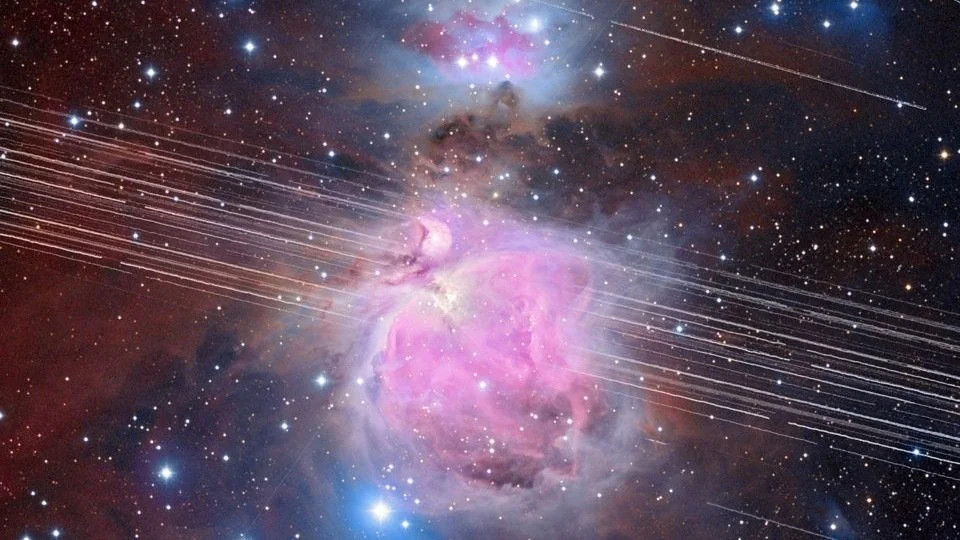
The Hubble Space Telescope was launched to escape the troubles of ground-based astronomy—things like clouds, city lights, and atmospheric shimmer. It was meant to have a clear, unhindered view of the universe. Yet today, Hubble's biggest nuisance comes not from Earth itself but from the growing swarm of satellites racing overhead. Ironically, the very technology that depends on space is now interfering with our efforts to study it.
In the last decade, satellite "constellations" have multiplied at a pace far faster than astronomers anticipated. Thousands more are already approved for launch, and many companies plan networks in the tens of thousands. These craft brighten the sky in two ways: by reflecting sunlight and by passing directly through telescope exposures. For sensitive instruments like Hubble, this creates streaks—long, bright lines scarring what should be deep, clean images. Some can be removed in post-processing, but others damage the data beyond repair. The result is simple: observations take longer, waste more time, and in some cases become impossible.
The frequency of these intrusions has risen sharply. In earlier years, satellite tracks in Hubble images were relatively rare. Now, the probability of a streak in any given observation has grown several-fold. Because Hubble takes long exposures, even a single passing satellite can ruin an entire shot. Multiply that by thousands of orbits every day and the impact becomes unavoidable. This is especially troubling for programs that monitor dim, distant targets—objects that require long, uninterrupted exposure time to detect at all.
Light pollution from satellites doesn't only affect space telescopes. Ground-based observatories are being squeezed between the glow of expanding cities below and fleets of spacecraft above. But Hubble was supposed to be immune to this. Instead, it now finds itself right in the traffic lane of modern low-Earth orbit.
Astronomers aren't calling for an end to satellite development; these networks underpin global internet services, communication systems, and Earth-monitoring tools. The concern is that, without coordination, the sky will become a crowded, reflective mesh that permanently alters astronomy. Several groups are working to find solutions—reducing surface reflectivity, changing orientations, limiting brightness, or improving scheduling so telescopes can plan around satellite routes. Some companies have begun testing these measures, though not all have adopted them.
The stakes are real. A telescope like Hubble offers data that cannot be recreated once lost. Its images have helped map dark matter, measure the expansion of the universe, and reveal the earliest galaxies. As the satellite population grows, the risk is that some of this work becomes compromised not by nature, but by avoidable human interference.
The sky has always been humanity's shared observatory. Now, it's becoming busier than ever. The challenge ahead is making sure that progress in one area—global satellite connectivity—doesn't hinder the progress of another: the centuries-long effort to understand the universe with clarity. Hubble still has much to offer, but protecting its view depends on decisions made on the ground today, before streaks in the sky become the permanent signature of the satellite age.
How Will The Universe End?
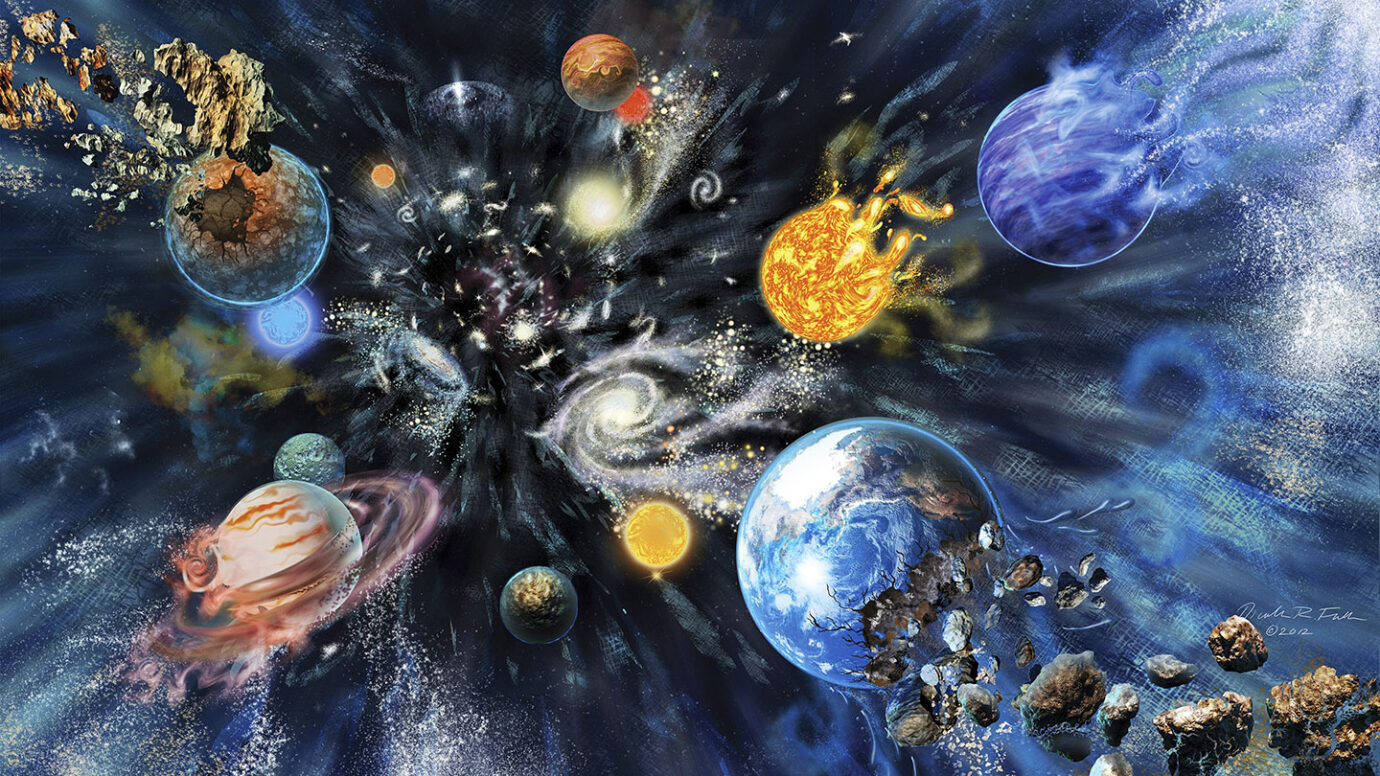
Depending on how you look at it, the universe might not have an "end," after all.
The universe began about 14 billion years ago with the Big Bang and has been evolving ever since, turning a thin early gas into stars and galaxies. By watching how galaxies change today, scientists can make reasonable predictions about the future, though nothing is guaranteed.
Stars will keep aging for billions and trillions of years. The sun is only halfway through its life. Blue stars die quickly, yellow stars last longer, and tiny red stars can shine for trillions of years before fading. As galaxies use up the gas that makes new stars, the universe will slowly grow dimmer until no new stars form at all.
Galaxies will continue merging, becoming larger and rounder over time. Spiral galaxies, like the Milky Way, will gradually turn into big elliptical systems as collisions mix their stars. The Milky Way and Andromeda are expected to merge in a few billion years, though their stars will pass by each other without harm.
The universe itself is still expanding. Gravity tries to slow it down, but a mysterious force called dark energy appears to be speeding it up. If that continues, distant galaxies will move so far away they can no longer be seen from here.
Based on what scientists know today, the far future will be a quiet, dark era: no new stars forming, only old red stars cooling, galaxies merging into single giant clusters, and the expansion pushing everything apart. This dark phase could last for trillions of years. But the universe may not have a final "end" — only a long, slow transformation into something very different from what we see today.
Quantum Entanglement and the Coming Age of Teleportation
An easy-to-grasp look at the science that may reshape human travel
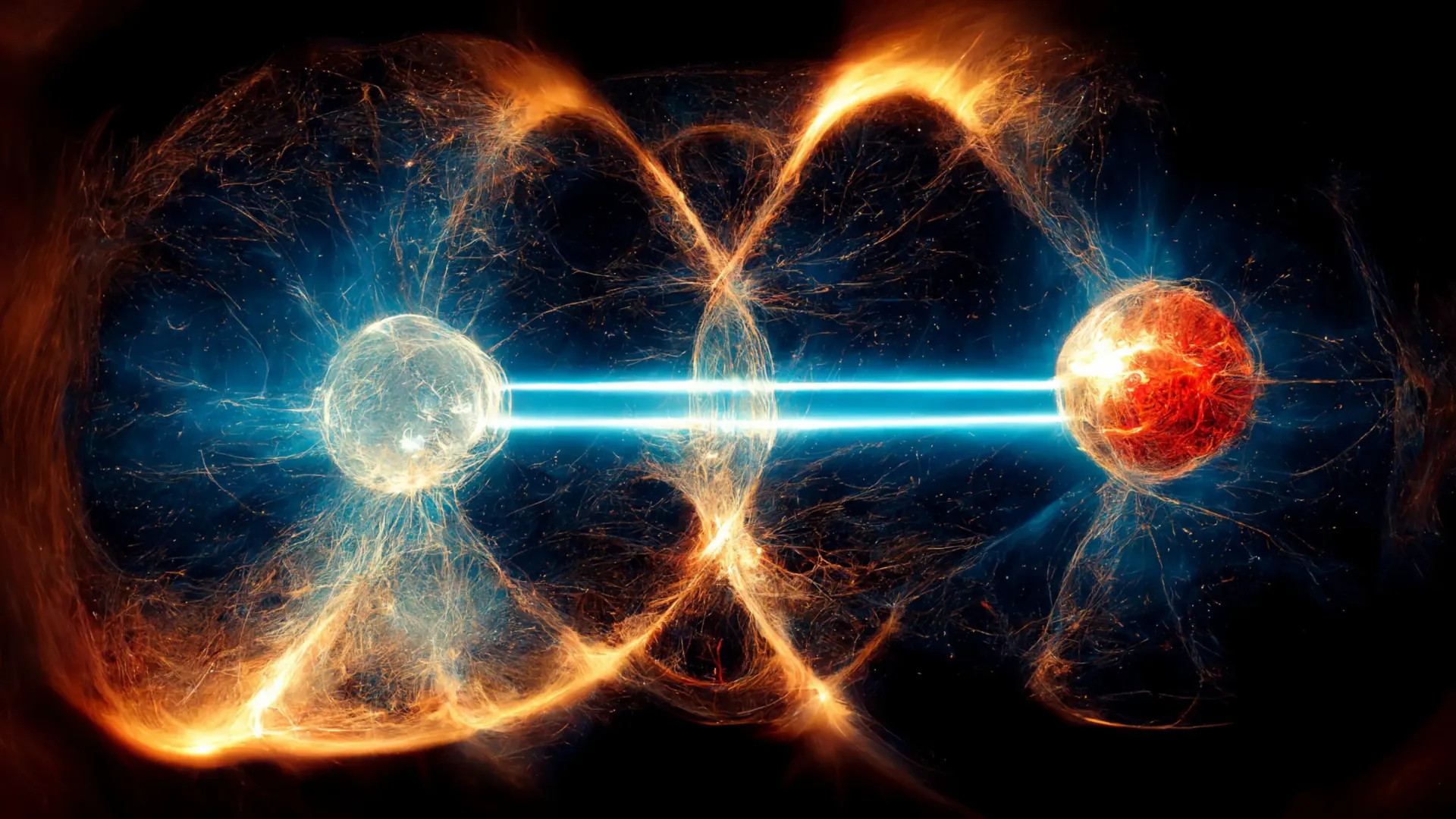
THIS may be the most incredible/amazing story you have ever read: Quantum entanglement sits at the heart of some of the most fascinating work in modern physics. It's an idea so strange that even Einstein raised an eyebrow at it, famously calling it "spooky action at a distance." Yet despite the nickname, the phenomenon is very real. If two tiny particles become entangled, they behave as one system no matter how far apart they travel. Change something about one, and its partner reacts instantly—even if one is in Sydney and the other could somehow be waiting on Mars.
Picture a magical pair of coins. Flip one, and the other immediately shows the same result. Not because a message rushed between them, but because, in a sense, they share the same identity. That, in a nutshell, is quantum entanglement: a silent connection built into the very structure of reality. This invisible link is now guiding scientists toward ideas that were once reserved for science-fiction writers, including the headline act—teleportation.
Teleportation today isn't about moving objects from A to B. Instead, scientists use entanglement to transfer the state or properties of one particle to another somewhere else. It's a bit like copying a document, except the original version disappears the moment the new one appears. This technique has been tested repeatedly in laboratories, between mountaintops, across cities, and even between Earth and satellites.
Turning this into a method for moving physical objects—and ultimately people—is enormously more complicated. A human being is made of unimaginable numbers of particles. Teleporting someone would require capturing the exact state of every one of those particles and sending that information elsewhere to be rebuilt perfectly. That's equivalent to mapping every grain of sand on an entire beach with flawless accuracy, then recreating that beach grain-by-grain somewhere else.
We're nowhere near that level of precision yet, but history shows that "impossible" is often just a temporary label.
Some far-reaching theories suggest that the fabric of space itself can be bent, twisted, or folded. If that's true, then distant locations might be linked through tunnels or shortcuts sometimes described as "holes." They aren't holes in the usual sense but distortions in spacetime that connect two places directly—much like folding a sheet of paper so two dots that were far apart suddenly touch.
Quantum entanglement appears in several of these theoretical models. Researchers suspect it could help detect, measure, or perhaps even stabilise these spacetime shortcuts. At the moment, these ideas live largely in mathematical equations, but they hint at a future where teleportation doesn't just transmit information. It could move physical matter—and potentially living passengers—through controlled gateways formed by the structure of the universe itself.
How the Technology Might Evolve
A realistic but forward-looking path for the development of quantum teleportation could look like this:
2025–2040
-
Major progress in quantum computers.
-
Routine teleportation of information between ground stations and satellites.
-
First solid theoretical models describing tiny, short-lived quantum "space holes."
2040–2060
-
Controlled teleportation of simple matter—atoms and small molecules.
-
Spacecraft adopt quantum-linked systems for instant communication.
-
Early attempts to stabilise microscopic spacetime shortcuts.
2060–2100
-
Teleporting complex objects becomes possible on a laboratory scale.
-
Quantum holes remain stable long enough for tiny probes to traverse.
-
Global agencies explore long-range, no-rocket material transport.
22nd century and beyond
-
Full object teleportation becomes practical.
-
Human teleportation, if proven safe, appears in extremely restricted trials.
-
Space travel shifts dramatically as teleportation hubs replace launch pads.
-
A network of quantum "highways" turns the solar system into a familiar neighbourhood. The Future in One Sentence
Quantum entanglement is the universe's built-in communication thread, and if humanity learns to master it, teleportation—of data, objects, and eventually people—could transform travel from a physical journey into a simple step between two points in space.
The Man Who Owns The Moon!
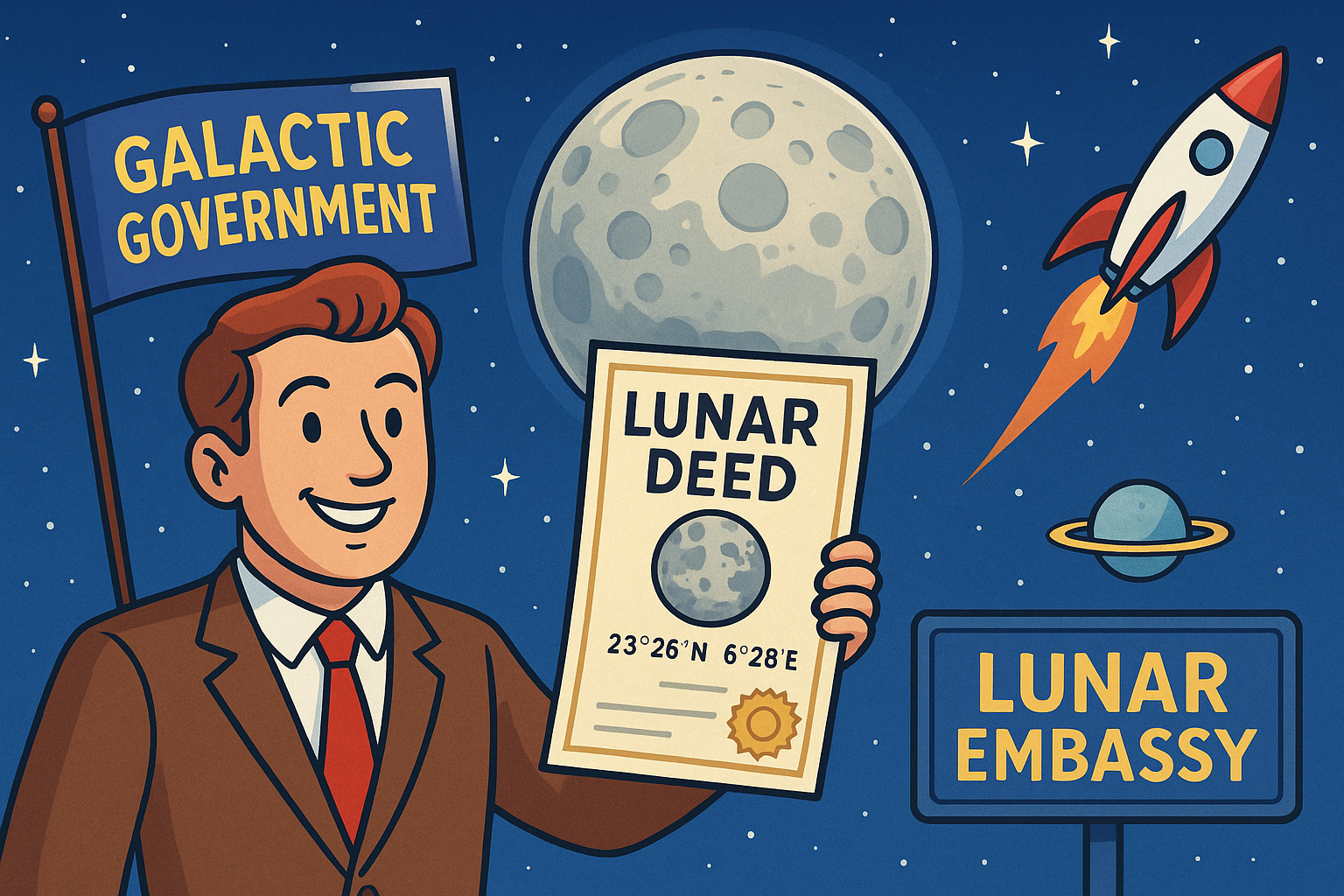
Dennis Hope is a man who looked up at the night sky one evening in 1980, noticed that nobody had put a fence around the Moon, and decided he might as well claim it. At the time, he was a car salesman in California with more ambition than cash. While mulling over international space law — or at least the parts he found interesting — he discovered that the 1967 Outer Space Treaty prevented governments from owning celestial bodies. It didn't say anything about private individuals. That tiny gap in the wording was all the encouragement he needed.
So Hope filed a "Declaration of Ownership" with his local authorities, sent letters announcing his claim to the United Nations, the U.S. government, and even the Soviet Union, then waited for someone to object. No one replied. In Hope's view, silence meant he had just become the landlord of the Moon, and for good measure, he also laid claim to every planet and moon in the solar system. Mars, Venus, Mercury — the man didn't think small.
With cosmic ambition and a printer, he launched a company called Lunar Embassy and began selling off lunar plots in acre-sized chunks. Prices hovered around twenty U.S. dollars, and buyers received a deed complete with coordinates, embossed seals, and enough decorative flair to convince you that you might actually own a corner of Mare Tranquillitatis. Hope even styled himself the head of a self-declared "Galactic Government," complete with a constitution and the promise of future lunar infrastructure, should anyone care to build something on their patch of dusty grey paradise.
Over the decades, he claims to have sold millions of these lunar parcels to people in more than a hundred countries. Some accounts suggest celebrities and political figures have purchased moon land as novelty gifts. Others bought plots for romance — after all, there's nothing quite like giving your partner the Moon to show you're serious — even if it does arrive as a paper certificate in the mail. Early on, Hope reportedly did some of his marketing the old-fashioned way, wandering into bars with a stack of deeds under his arm, asking strangers if they wanted to buy a piece of the Moon. It must have worked surprisingly well; his "Galactic Government" now has thousands of self-described "citizens," all of them proud lunar landholders.
There's just one problem. Every expert in space law who has examined Hope's claim has come to the same conclusion: none of it has any legal standing. The spirit of the Outer Space Treaty, and every major interpretation since, makes it clear that celestial property cannot be owned by anyone — not governments, not companies, and not private individuals with creative paperwork. Courts in various countries have dismissed similar claims as having no basis in law. Later attempts, such as the 1979 Moon Treaty, went even further, explicitly banning private ownership, though major spacefaring nations never signed it. In short, the Moon remains gloriously ownerless, no matter how many certificates are floating around the world.
Still, Hope's business thrives because people enjoy the idea of owning something that hangs in the night sky. Most treat the deed as a novelty or a joke gift, not a serious investment. A few like to imagine that one day, perhaps in some far-off future where lunar tourism is as casual as a weekend away, their little acre might be worth something. Others simply enjoy the whimsy — an acre of Moon costs less than dinner and often guarantees a better laugh.
And then there's Hope himself, a man who took an obscure legal loophole and turned it into a decades-long enterprise. Whether you see him as eccentric, entrepreneurial, or just cosmically cheeky, his story remains one of the strangest intersections of space exploration, human imagination, and paperwork ever attempted.
So is it real? Not in any enforceable sense. Nobody owns the Moon, not even the man who sells it. But as long as people keep buying certificates for fun, Dennis Hope will continue to sell something that, for all its lack of legal weight, remains irresistible: the chance to say, with a straight face, that you own a little piece of the Moon.
Science Vs Superstition - Separating Astronomy From Astrology
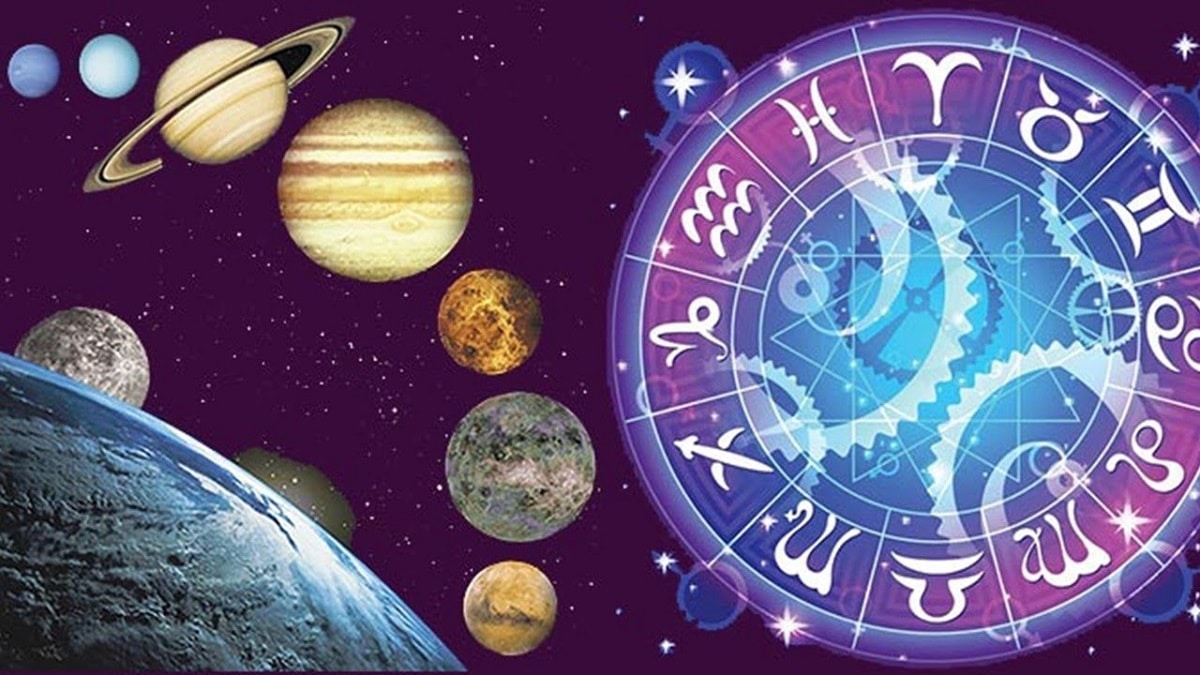
Staring up at the night sky, a blanket of twinkling stars, has fascinated humans for as long as we've had eyes to see. Stars have been our guides, our muses, and the spark for both scientific exploration and... let's just say, some more "colorful" interpretations. Enter astronomy and astrology: two fields that, at first glance, seem to share a cosmic bond, but take completely different approaches to the heavens. Let's take a fun, yet scientific, look at these two starry cousins.
Astrology has been around forever—well, almost. It's been with us since the Babylonians, who were probably the first to connect the dots between stars and personal fate. Then the Greeks got in on the action, tying zodiac signs to everything from love lives to the fall of empires. In ancient times, stars weren't just far-off balls of gas—they were the celestial puppeteers pulling the strings of human destiny. Astrology was as much about understanding the universe as it was about interpreting how the stars could shape our lives.
But as time marched on and science developed, astronomy emerged. Gone were the days of interpreting celestial movements as omens or personality guides. In came telescopes, measurements, and a whole lot of math. Astronomy—still inspired by those early skywatchers—became focused on uncovering the truths of the universe. Instead of focusing on predicting the rise and fall of kings, astronomers set their sights on understanding the actual workings of the cosmos.
Picture this: Two friends look up at the same star. One's an astronomer. The other's an astrologer. The astronomer is jotting down notes, calculating the star's temperature, size, and age. They're figuring out how far away it is and wondering if it might host any planets with the potential for life. All very scientific stuff, right? The astrologer, on the other hand, is probably thinking, "Oh, that star's in Pisces today, so it must mean I should totally avoid important decisions until tomorrow." There's a bit of a gap between the two approaches.
Here's where things get a little tricky: astrology isn't science. It wants to be, but it just doesn't quite measure up to the standards of the scientific method. Scientists have repeatedly found no evidence linking the positions of stars and planets to our personalities, love lives, or fortunes. In short, your zodiac sign isn't why you got stuck in traffic or why your coffee tasted weird this morning.
That said, the allure of astrology doesn't fade, does it? Millions of people still check their daily horoscopes, looking for guidance or just a little cosmic reassurance. And why? Because astrology taps into something deep inside us: the desire to feel connected to something bigger. It gives us a narrative to cling to—something to believe in, especially when the universe seems too big to make sense of.
Does that mean we should dismiss astrology entirely? Not necessarily. It can be fun, and it provides a way for people to think about their lives, relationships, and the world around them. It's not science, but it's a part of our cultural fabric and can even inspire people to take a closer look at the real universe through the lens of astronomy.
So, what's the takeaway here? Embrace both astronomy and astrology for what they are. Astronomy gives us the tools to understand the mind-blowing reality of the universe. Astrology? Well, it gives us a fun, quirky way to think about our place in it, even if it doesn't have the scientific backing to predict your next big life event. The magic of the stars is less about your horoscope and more about marvelling at the immense, awe-inspiring universe we live in.
And who knows? Maybe you'll catch a glimpse of a star that'll make you rethink your whole approach to life. Just don't bet the farm on it. Oh, and by the way, check out my Website for a Norfolk Island Astronomy Tour. www.davidreneke.com
Voyager 1 approaches one light day from Earth
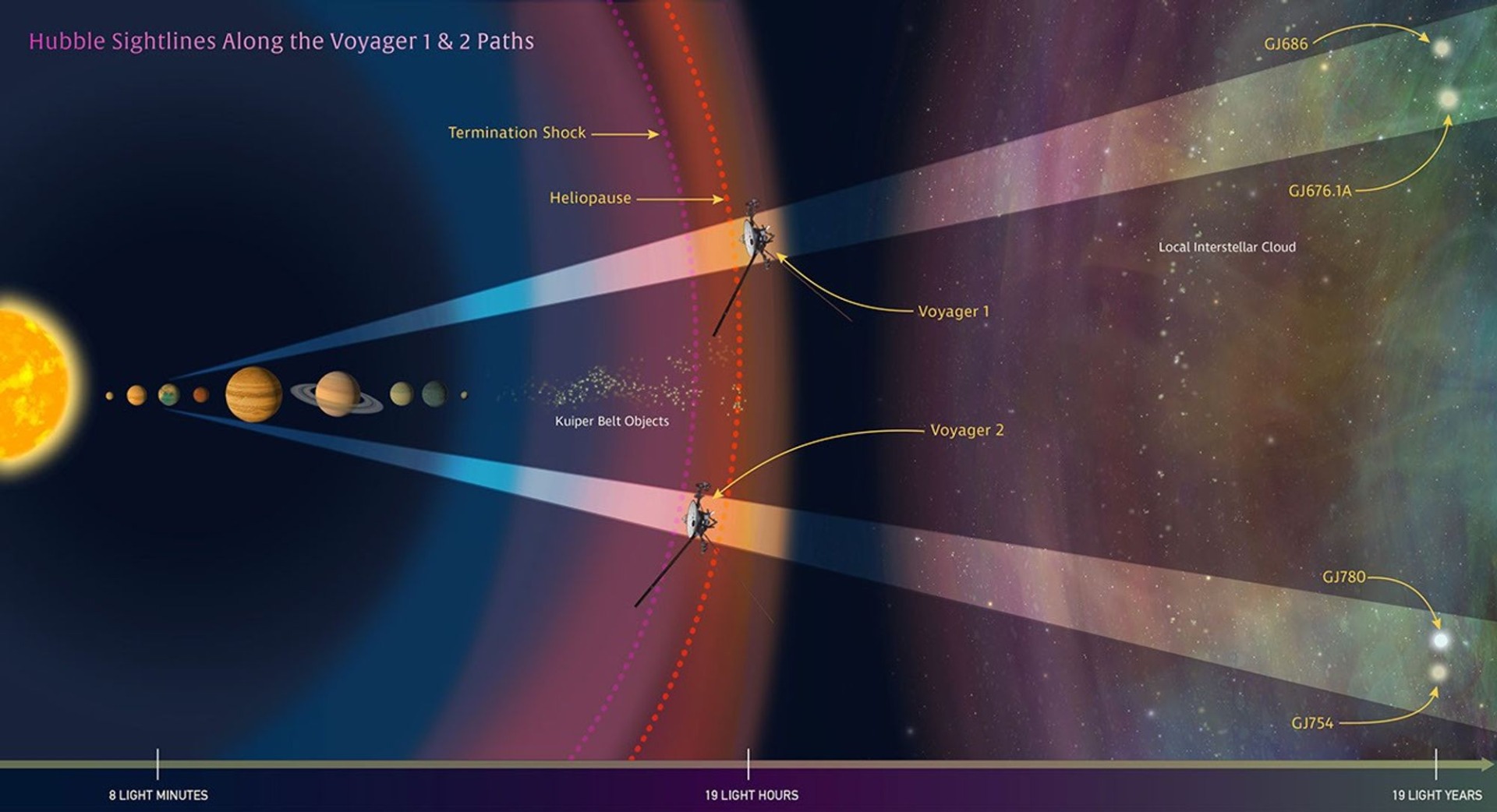
As it heads out of the solar system never to return, the deep space probe Voyager 1 is headed for yet another cosmic milestone. In late 2026, it will become the first spacecraft to travel so far that a radio signal from Earth takes 24 hours, or one light day, to reach it.
According to Einstein, the speed of light is as fast as it's possible for anything to go. That may seem arbitrarily restrictive, but at 186,000 miles per second (299,388 km/s), that leaves a lot of leeway unless you're dealing with things at computer speeds where a delay can be aggravating.
Another thing that can be aggravating is that though light is fast, the universe is, as The Hitchhiker's Guide to the Galaxy says, really big. This means that if you have to cover a long enough distance, the speed of light starts to become noticeable in a way that we don't see on Earth.
Perhaps the first time we saw this publicly was during the Apollo Moon landings over 50 years ago. If you watch old video recordings of the astronauts on the lunar surface talking to Mission Control back on Earth, you'll notice that there's a delay of about 2.6 seconds between when someone makes a comment and the other party replies. That's because with the Moon being about 226,000 miles (363,000 km) from the Earth, it takes a radio signal 1.3 seconds to travel the distance.
If you go to Mars, this gap becomes up to four minutes. For Jupiter, it's up to 52 minutes, and for Pluto (which I still stubbornly say is a planet!) that comes to up to 6.8 hours. Small wonder that deep space missions require robotic spacecraft that have a high degree of autonomy. If they had to wait for direct instructions from Earth before making a move, a few Mars rovers would have ended their careers as a pile of scrap at the bottom of a ravine.
None of this compares to Voyager 1, the veteran probe launched in 1977 to make a flyby of Jupiter and Saturn before heading out on a one-way trajectory into interstellar space. Despite being almost a half-century old and flying through the incredibly cold, radiation-saturated depths of space at the edge of the solar system, it still continues to function and NASA is determined that it will continue to do so until its nuclear power source finally gives out in the next year or so.
Functioning or not, along with its sister craft Voyager 2, Voyager 1 will continue moving farther and farther from Earth. As it does so, the time light takes to travel to it stretches out as well. According to NASA, at the time of writing, the probe is about 15.7 billion miles (25.3 billion km) from Earth, with a one-way message taking 23 hours, 32 minutes and 35 seconds to reach its destination.
But in around a year, (currently estimated to fall on November 15, 2026), Voyager 1 will be 16.1 billion miles (25.9 billion km) from Earth, crossing the line where a signal from it will take 24 hours to reach us.
Voyager 2 is still somewhat in the rearguard with a distance of a mere 19.5 light hours.
Despite the vast distances involved, both Voyager probes are still in contact with Mission Control thanks to NASA's Deep Space Network tracking system. The bad news is that from late next year, any commands given to Voyager 1 will require two days just to be acknowledged, so maintaining the distant explorer is a case of slow motion nerves for space agency engineers.
What Would Be the Scariest Message Humanity Could Receive from Space?

Imagine this: Earth finally receives its first confirmed signal from an alien civilization. Anticipation buzzes across the planet. Scientists gather, politicians hold their breath, the world tunes in… only to find the message is a familiar one. It's a grainy broadcast from 1936, the opening ceremony of the Berlin Olympics—featuring none other than Adolf Hitler.
No, this isn't a bizarre sci-fi plot twist. That particular broadcast was one of the first strong television signals powerful enough to escape Earth's atmosphere. As SETI astronomer Seth Shostak explained, "It was at a high frequency that might make it through the ionosphere." Though it's extremely unlikely aliens would actually pick it up—it was weak and broadcast in all directions—it sparks an unsettling thought: what if our first impression to the cosmos is history's worst PR moment?
In the film Contact, this is exactly what happens. Aliens return our signal without understanding its content—essentially saying "hello" by sending us a message of hatred. It's a cosmic miscommunication of epic proportions.
But that's just the start of what could go wrong. The real chills begin when you imagine the other types of messages we might receive. What if we picked up a signal that simply said, "We are on our way"? No details. No origin. Just the cold announcement. That's the kind of vague transmission that would freeze world leaders in their tracks and send scientists scrambling.
Or worse: what if the message said, "We know you're there. We've always known"? Suddenly, we're not alone—we never were. According to the Zoo Hypothesis, alien civilizations might already be watching us. We could be the unaware animals in a galactic safari park, with intelligent beings observing us until we're advanced—or behaved—enough to be contacted.
What if their message said, "Welcome. You're ready." Ready for what? It might be uplifting—or it might mean we've just been promoted from observation to participation in some kind of cosmic trial.
There's also the unnerving idea behind one solution to the Fermi Paradox: that advanced civilizations are silent because they're hiding. Maybe they learned the hard way that broadcasting your presence is dangerous. And if we hear a message from space, is it a friendly greeting—or a baited trap?
All this speculation hinges on SETI—the Search for Extraterrestrial Intelligence. Today, SETI researchers around the globe scan the skies, using radio telescopes to listen for unnatural signals from deep space. So far? Silence. But the search continues, growing more sophisticated every year, using AI, wide-spectrum analysis, and even optical methods.
Still, perhaps the scariest message of all would be… no message. What if there's nothing out there? No civilizations, no watchers, no galactic neighbors. Just us. Alone. That may be more frightening than hostile aliens—because it means we're it. The lone spark of intelligence in a vast, cold universe. If we screw it up here, there may be no second chance, anywhere.
So, next time you stare at the night sky and wonder who's out there, just remember—it's not just a question of if they exist, but what they might say when they finally call. And what if… they already have?
How Far Into Space Do Our TV Signals Go?
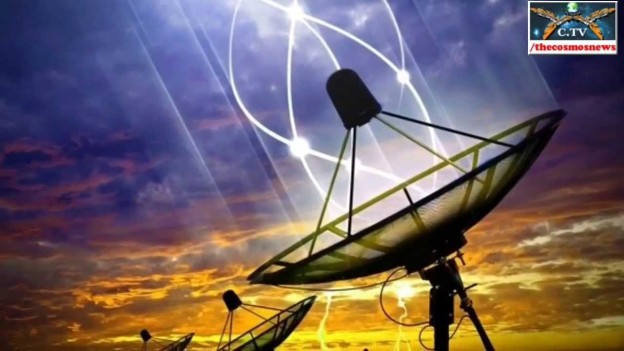
If you've seen the film Contact, you'll remember the clever twist: astronomers pick up a message from the star Vega, and hidden inside it is the old black-and-white broadcast of Hitler opening the 1936 Olympic Games. The idea is simple and exciting — our early TV broadcasts have drifted far enough into space for someone else to notice them.
It's a terrific story. But the real world is a bit less tidy.
The 1936 Olympics really were the first strong television broadcast that managed to leak through Earth's atmosphere and escape into space. From that day on, a bubble of radio and TV "noise" has been expanding outward at the speed of light. If you drew a giant circle around Earth 90 light-years across, that's roughly how far our early broadcasts have travelled.
So in theory, a few thousand nearby stars now sit inside our expanding radio bubble. But there's a catch: just because the signals have travelled that far doesn't mean anyone could actually pick them up.
Here's why. When a TV signal leaves Earth, it spreads out in all directions, getting weaker and weaker the farther it travels. Think of shining a torch across a paddock — by the time the beam reaches the far fence, it's barely more than a dim glow. Stretch that same idea over dozens of light-years, and the original broadcast becomes unbelievably faint.
A good example of this is Voyager 1, the spacecraft now cruising at the edge of the Solar System. Its tiny radio transmitter is only 23 watts — about the same as a small light bulb — yet we can still detect it from an enormous distance because we use huge antennas that are designed to listen for exactly that signal. But if we tried to send Voyager's signal to the nearest star, we'd need a transmitter more than a hundred million watts strong to make it as easy for them as it is for us.
And ordinary TV stations back on Earth don't come close to that. Many use only a few million watts, and they beam their signal sideways across the landscape, not into deep space. Only a small amount leaks upward, and that portion becomes so weak so quickly that it blends into the background hiss of the universe after just a few light-years.
Even if someone out there had super-powered receivers, they'd still face another hurdle: our broadcasts use formats and timing systems that only make sense to us. It would be like finding a mysterious cassette tape in the desert without having any idea what a cassette player even looks like.
There's more working against us. Space isn't empty — thin clouds of gas and dust float between the stars, and over long distances they can smudge and scatter weak signals. By the time an alien civilisation received an old Neighbours episode, it would sound more like static than a soap opera.
None of this means we can't communicate across the stars. It just means casual leakage from our TV sets won't do it. If we ever truly want to say hello to another civilisation, we need to use a frequency where space is quiet, send something powerful and clear, and make sure the message isn't mistaken for natural noise.
We actually tried this once. In 1974, the Arecibo Observatory sent a special three-minute broadcast into space. It wasn't a TV program — it was a carefully designed pattern of 1,679 bits that, when arranged correctly, form a picture showing things like our DNA, our Solar System, and a human figure. It was our most deliberate and strongest interstellar "greeting" so far.
So, how far into space do our TV signals go? They're out there, spreading further every second. But beyond a few light-years, they're too faint and messy to make sense of. If anyone finds us, it will probably be by noticing Earth itself — our oxygen-rich atmosphere, our water, and the green glow of plants — the same clues we're now searching for on distant worlds.
And if we ever do get a message from someone else, it won't arrive as an old broadcast from the 1930s. It will start small, simple, and unmistakably artificial — a cosmic knock on the door saying: We're here.
Chinese Space Station Achieves First-Ever Oxygen and Rocket Fuel Production Using Artificial Photosynthesis
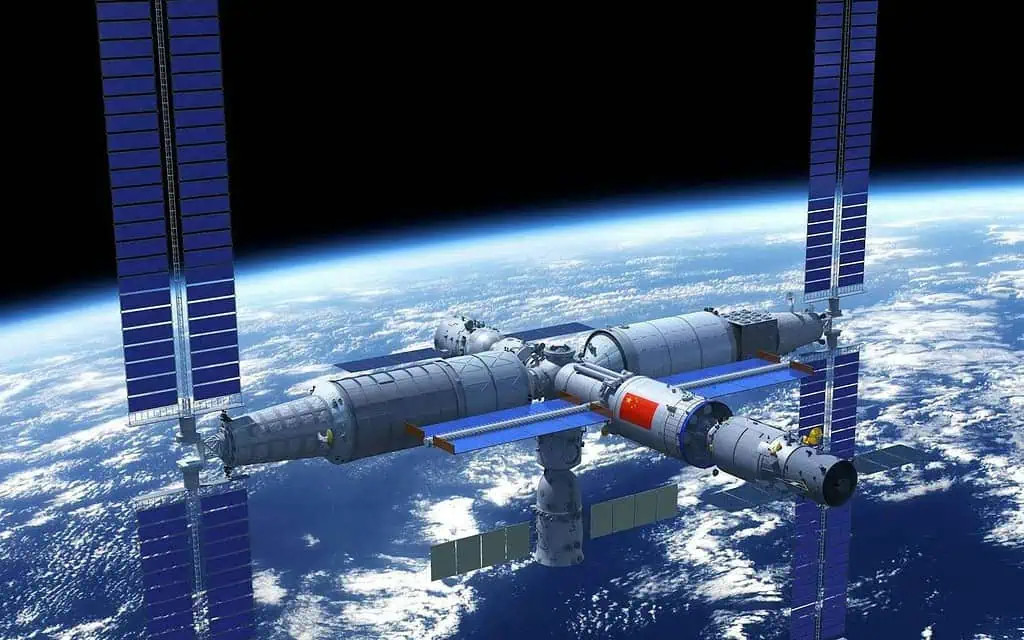
China has quietly ticked off a milestone that, until now, belonged firmly in the realm of science fiction. A small experiment aboard the Tiangong space station has succeeded in turning sunlight, water and carbon dioxide into oxygen and rocket propellant components — all through artificial photosynthesis. It's the first time this has ever been achieved in orbit, and it's a major step toward living and working far from Earth.
At the heart of the experiment is a compact chemical system designed to mimic what plants do naturally. Instead of leaves, it uses specialised catalysts that split water into oxygen and hydrogen using sunlight. The oxygen can be fed straight into the station's life-support loop, reducing the need to haul fresh supplies from Earth. The hydrogen, meanwhile, can be combined with carbon dioxide — the stuff astronauts exhale — to produce useful carbon-based fuels. In other words, Tiangong has demonstrated a space-ready version of a carbon-recycling factory.
Why is this significant? Because long-duration missions depend on two things: breathable air and propellant. Both are heavy, both are expensive to launch, and both currently limit how far humanity can push into the Solar System. If you can make them on-site using nothing more than sunlight and the leftovers of human activity, the whole economics of spaceflight changes.
This breakthrough also offers a glimpse of the future of off-Earth industry. A station that can manufacture its own oxygen and fuel becomes more than a temporary outpost — it becomes a stepping stone. Lunar bases could eventually run similar systems using sunlight and ice trapped in shadowed craters. Mars missions could use the planet's abundant carbon dioxide and frozen water to create their return fuel. Every kilogram made on location is a kilogram that doesn't need to be blasted out of Earth's gravity well.
There's also a practical elegance to the achievement. The hardware tested on Tiangong is small, rugged and requires no soil, fragile biological components or sprawling greenhouses. It's engineering, not agriculture, and that makes it ideal for the harsh realities of space.
China hasn't announced when this technology will be scaled up, but the first proof-of-concept demonstration is now a matter of record. It shows that the idea works — not in a lab, not on paper, but in orbit. That alone marks a turning point.
For decades, space agencies have dreamed about "closing the loop" — recycling waste into resources for sustainable exploration. Tiangong's artificial photosynthesis experiment is a firm stride in that direction. It hints at a future where spacecraft refuel themselves, habitats refresh their own air and distant outposts rely on local chemistry rather than resupply rockets. It's early days, but one thing is clear: space travel just became a little more self-sufficient, and a lot more interesting.
Mach-23 potato gun to shoot satellites into space
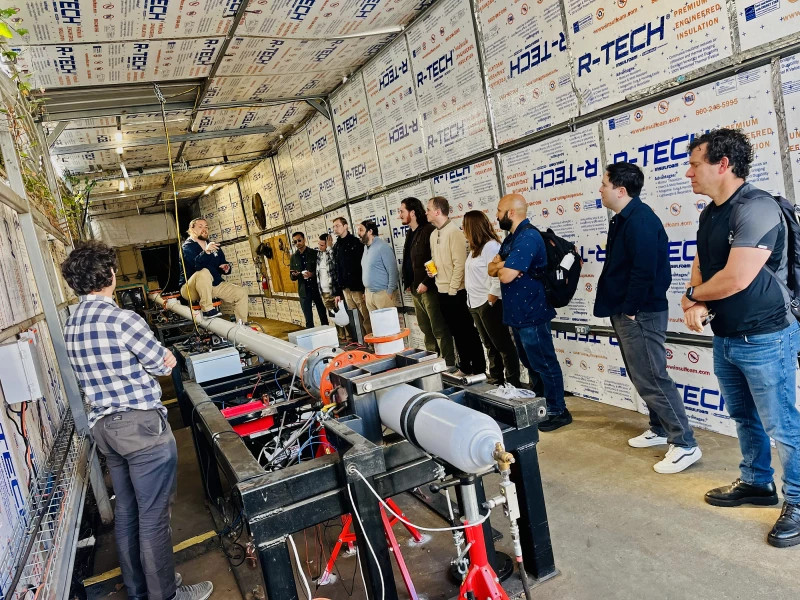
"What can we do to radically drop the price of launch in the next 10 years?" That's the question Mike Grace keeps asking—and he's not whispering it into the void. Grace is the CEO and founder of Longshot, a company quietly stepping into the limelight with an audacious idea: getting payloads into space without rockets.
If your first reaction is "Longshot who?" you're not alone. Until recently, I couldn't have picked them out of a lineup, either. SpinLaunch? Sure, that one rings a bell. But Longshot? Not so much. Still, when the boss forwarded me an email saying, "I'm flat out, but Joe will be up for this," I figured it was worth a look. Loz has known me for more than a decade; if he says it's my kind of madness, he's usually right.
That's how I found myself sitting down with Grace—part engineer, part visionary, part human question mark—and listening to a plan that sounds like it was sketched in the margins of a sci-fi novel. The aim? To develop a colossal, ground-based launcher capable of hurling payloads skyward at staggering speeds. No boosters. No towering rockets. Just brute-force physics and a machine built to treat orbital delivery a bit like a cosmic slingshot.
If this all feels faintly familiar, there's good reason. A couple of years back, Loz wrote a story with the eyebrow-raising phrase "Nazi über-cannon" in the headline. That article pulled me straight down the rabbit hole—an exploration of historical mega-gun concepts and how a modern company was adapting the underlying principles, minus the sinister baggage, to pitch a new way of reaching orbit. It sounded like the fever dream of an over-caffeinated engineer armed with a physics textbook and a pile of ambition.
Now Longshot seems ready to push that idea even further. Grace isn't shy about the scale of the challenge. He's blunt: space access is still too expensive, too slow, too dependent on complex, failure-prone rocket systems. If the world wants mass orbital delivery, daily launches, and cheap access to space, something has to give—and in his eyes, rockets as we know them simply won't cut it.
His proposal is simple in concept, monstrous in execution: build an enormous, high-velocity launcher capable of accelerating payloads to Mach speeds, then letting the atmosphere and momentum do the rest. Yes, it sounds like someone scaled up a 23-potato-gun backyard experiment and pointed it at the sky. But unlike the YouTube version, this one has serious engineering behind it—and serious investment interest.
Grace argues that if someone doesn't try a radical approach like this now, we'll still be paying premium prices for launches in a decade. And while it may sound wild, disruptive ideas often do—right until they work.
Is Longshot the company to pull it off? Hard to say. But Grace's conviction is undeniable, and the concept forces a tantalising question: what if getting into orbit didn't require a roaring column of fire at all? What if we could simply… launch?
Whether this project becomes the next big leap or just a fascinating footnote in the history of spaceflight, one thing is certain: the future of getting off this planet is changing, and it might just arrive with a bang.
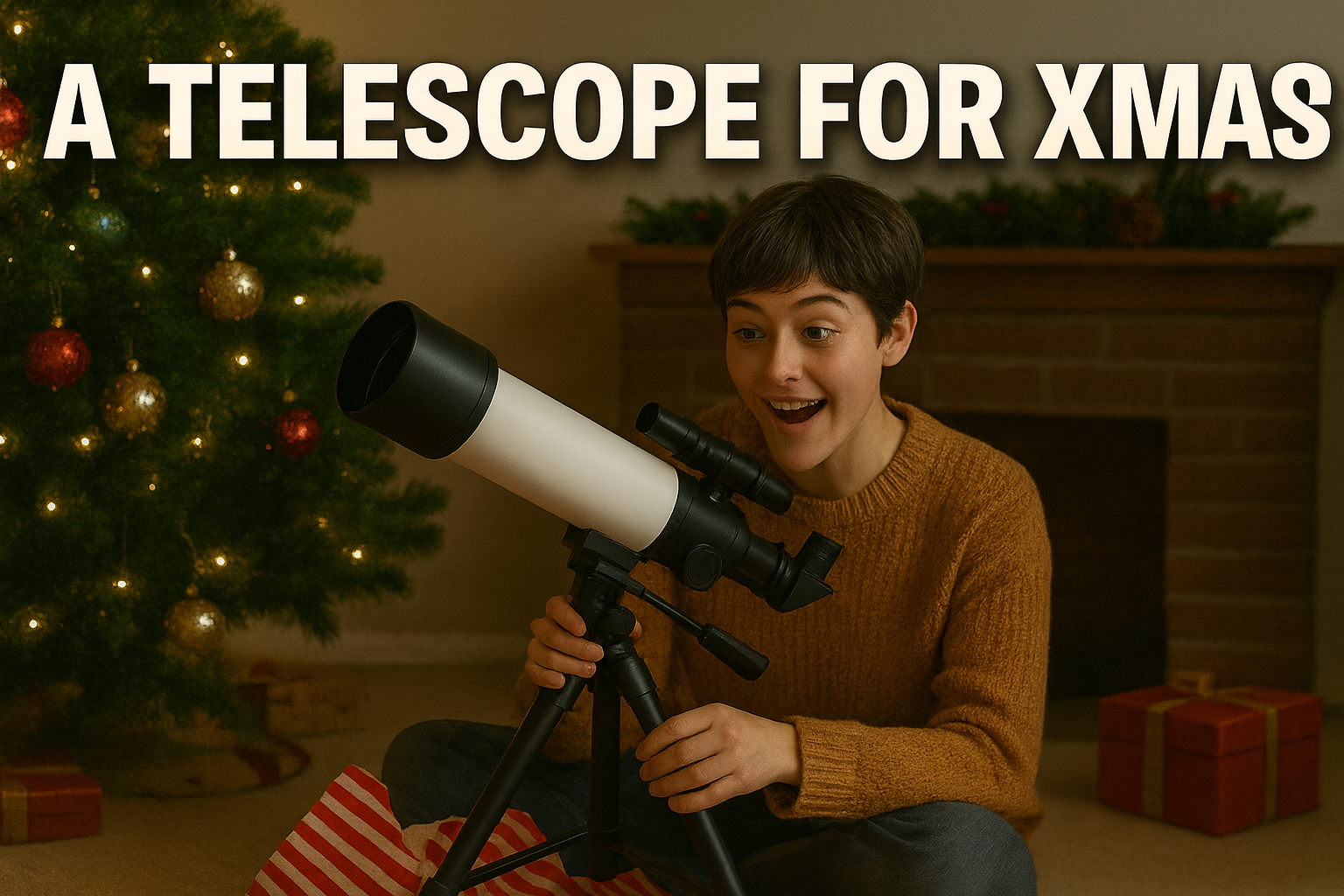
This week we're diving into telescopes again — the Christmas kind! What's sitting at the top of your wish list this year? If exploring the night sky is part of your new year plans, then a great telescope is your passport to the universe. And honestly, in the space age we're living in, there's never been a cooler time for a young person to start stargazing.
I'm constantly asked what telescope people should buy, and the honest answer is simple: get the best one you can sensibly afford, and — most importantly — the one you'll actually use. I've lined up some solid tips for you, so pay attention! And remember, you've got less than four weeks to make that decision count.
These days every telescope is a balancing act between price and performance. In the world of beginner scopes, there's a forest of junk out there, but genuine entry-level instruments aren't too pricey. Expect to put aside at least $250 for a decent, reliable beginner telescope in Australia.
You can find scopes around the $100 mark, sometimes less, but tread carefully. Many are built to look impressive while delivering the optical equivalent of fogged-up sunglasses. Their mechanical parts often match that quality.
Above all else, ignore those dazzling, full-colour photos of planets splashed across the boxes of bargain-bin scopes, along with the ridiculous claims of "1,000× magnification." Those images are marketing bait, nothing more. You won't see anything like that unless you're using the Hubble Space Telescope — and you already know the price tag on that one!
Skip department stores entirely; they usually lack the expertise needed. Choose a specialist telescope dealer or, in some cases, a knowledgeable camera shop. A proper telescope retailer can figure out your needs and point you toward something that won't become a dusty ornament by February.
The mount, surprisingly, is almost as important as the telescope itself. Make sure the one supplied with your chosen scope is smooth, steady, and built like it wants to stay upright. If you can lift the whole setup with one hand, it'll wobble at the first hint of a breeze, and you'll invent new vocabulary you didn't know you had. Avoid that experience!
For brand-new astronomers, learn the constellations first, then grab a pair of binoculars to hunt your first "deep sky" gems — star clusters, bright nebulae, and planets. On a tight budget? Ask Santa for quality binoculars; they reveal far more than you might imagine. They're really just double telescopes, after all. I still use mine every clear night.
It's wild to think the International Space Station has clocked up 25 years. As large as a football field, shared by 16 nations, and visible right here in Australia, it's a marvel of our era. You can spot it passing over Wauchope and nearby areas via several good free apps on your phone or tablet.
Imagine experiencing 16 sunrises and 16 sunsets every day! Now that's a job. Clear skies! And if you're telescope-shopping this Christmas and want guidance, I'm available for lessons and buying advice, plus we can arrange a lesson or two after the event on a field night with my group, Mid North Coast Astronomy, if you're down my way.
Weather permitting, we meet monthly here in Wauchope and don't forget, we're running our yearly 'Stargazing Tour' to Norfolk Island again next year. Details on my website www.davidreneke.com Ph 0400 636 363
A high speed sci-fi spacecraft concept that could get us to Mars within 30 days!
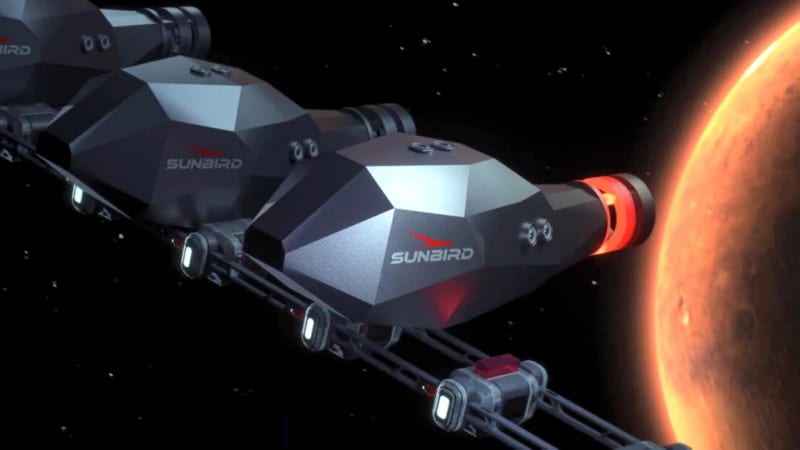
Engineers around the world are now testing a new generation of hypersonic engines, especially rotating-detonation designs where fuel ignites in a controlled circular shockwave. This produces far more power and efficiency than standard combustion and could push aircraft to Mach 8 or even Mach 10. If these engines scale as planned, a Sydney–London trip in about two hours is no longer a fantasy but a realistic engineering goal for the next couple of decades. Some companies are also developing near-space aircraft that skim the edge of the atmosphere, switching from air-breathing engines to rocket assist at high altitude. With far thinner air and far less drag, the speed gains can be enormous.
At the same time, space laboratories are reporting major progress in plasma-electric propulsion. These engines ionise hydrogen and accelerate it using magnetic fields, producing exhaust velocities of around 100 kilometres per second in recent tests — far beyond anything a chemical rocket can achieve. That kind of performance shrinks the journey to Mars from nine months to roughly 30 to 60 days. A parallel effort is underway to perfect a centrifugal nuclear-thermal engine that spins molten uranium to superheat hydrogen propellant. It offers the thrust of a chemical rocket with the efficiency of a small reactor, making it ideal for deep-space missions and heavy cargo.
Although today's prototypes generate only modest thrust, measured in newtons, they've demonstrated the one thing researchers have chased for decades: stable, controllable operation with far greater efficiency than any current engine. This has sparked a surge of investment from both government agencies and private space companies.
Put together, these advances point to a future where ultra-fast intercontinental flights become routine and travel across the Solar System becomes a practical engineering exercise rather than a year-long expedition. These are no longer science-fiction ideas. Early engines exist, they work, and if progress continues at this pace, they could revolutionise both aviation and spaceflight within a generation.

**Leave a message or comments on this website Email me directly : www.davereneke@gmail.com
NB/ Please Include Your Name and Email address If You Require An Answer.
'ASTRO DAVE' RENEKE - A Personal Perspective

His extensive background includes teaching astronomy at the college level, being a featured speaker at astronomy conventions across Australia, and contributing as a science correspondent for both ABC and commercial radio stations. David's weekly radio interviews, reaching around 3 million listeners, cover the latest developments in astronomy and space exploration.
As a media personality, David's presence extends to regional, national, and international TV, with appearances on prominent platforms such as Good Morning America, American MSNBC news, the BBC, and Sky News in Australia. His own radio program has earned him major Australasian awards for outstanding service.
David is recognized for his engaging and unique style of presenting astronomy and space discovery, having entertained and educated large audiences throughout Australia. In addition to his presentations, he produces educational materials for beginners and runs a popular radio program in Hastings, NSW, with a substantial following and multiple awards for his radio presentations.
In 2004, David initiated the 'Astronomy Outreach' program, touring primary and secondary schools in NSW to provide an interactive astronomy and space education experience. Sponsored by Tasco Australia, Austar, and Discovery Science channel, the program donated telescopes and grants to schools during a special tour in 2009, contributing to the promotion of astronomy education in Australia. David Reneke, a highly regarded Australian amateur astronomer and lecturer with over 50 years of experience, has established himself as a prominent figure in the field of astronomy. With affiliations to leading global astronomical institutions,
David serves as the Editor for Australia's Astro-Space News Magazine and has previously held key editorial roles with Sky & Space Magazine and Australasian Science magazine.


